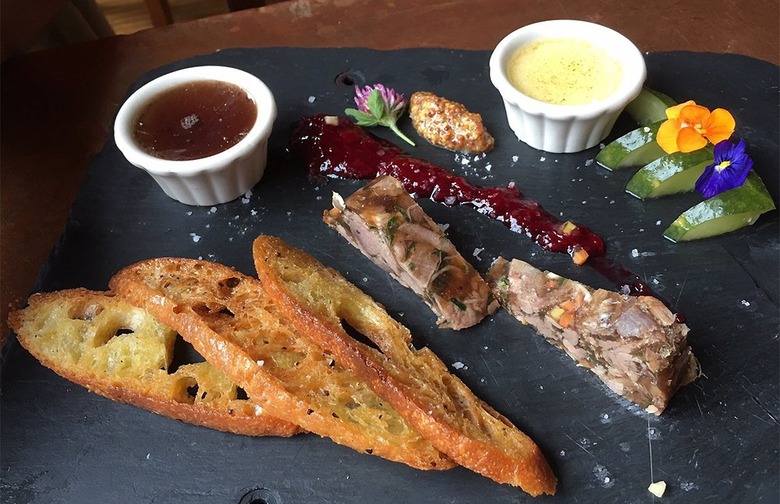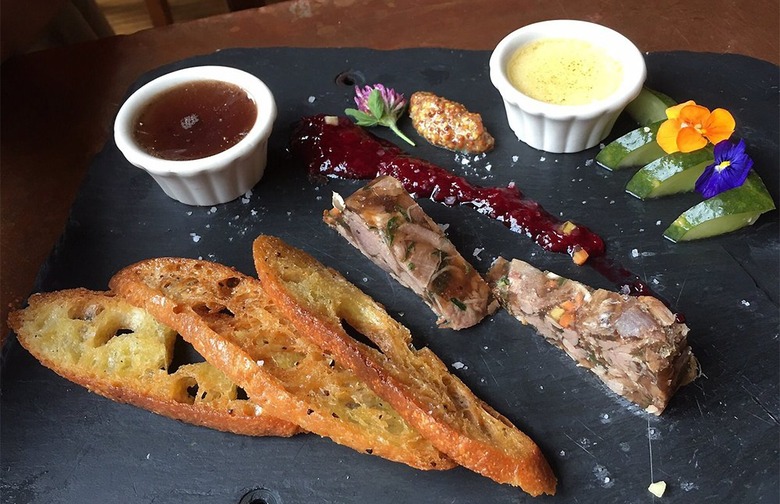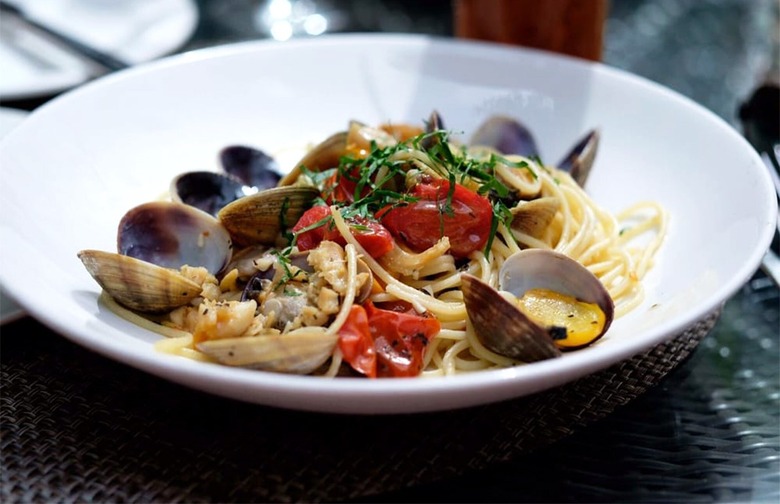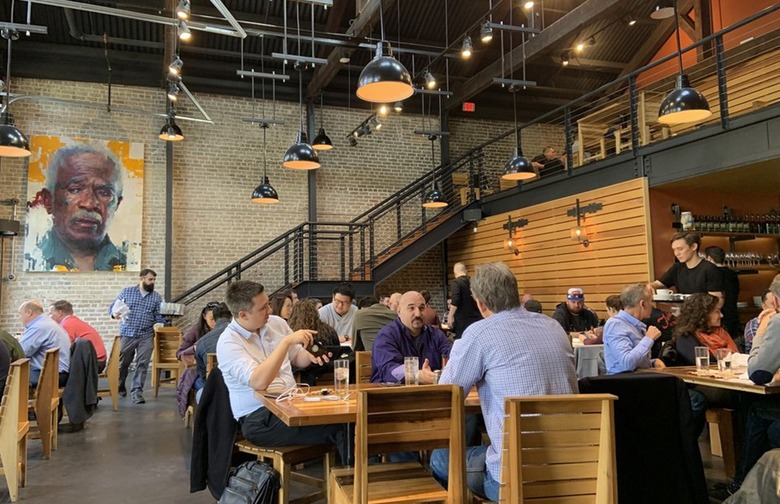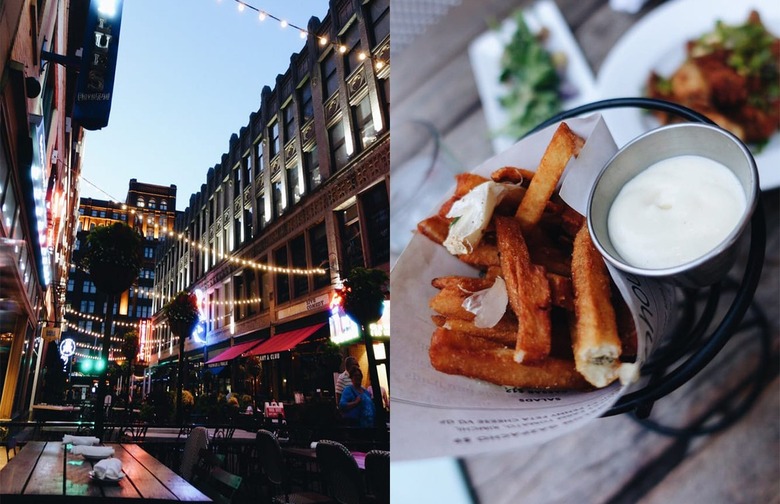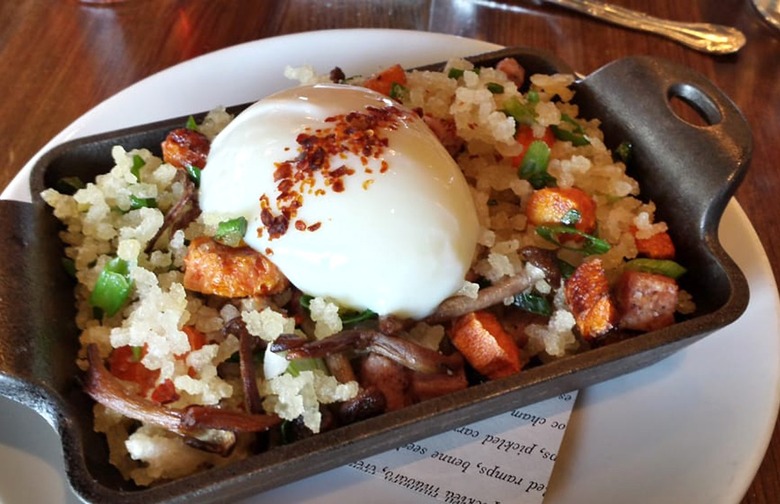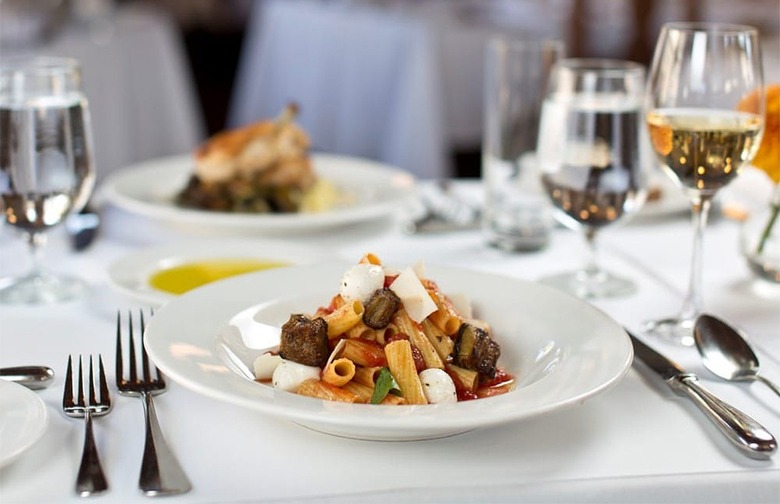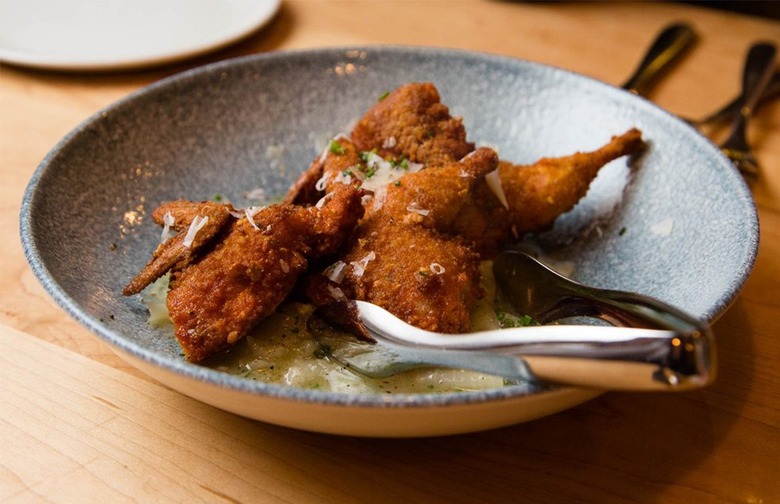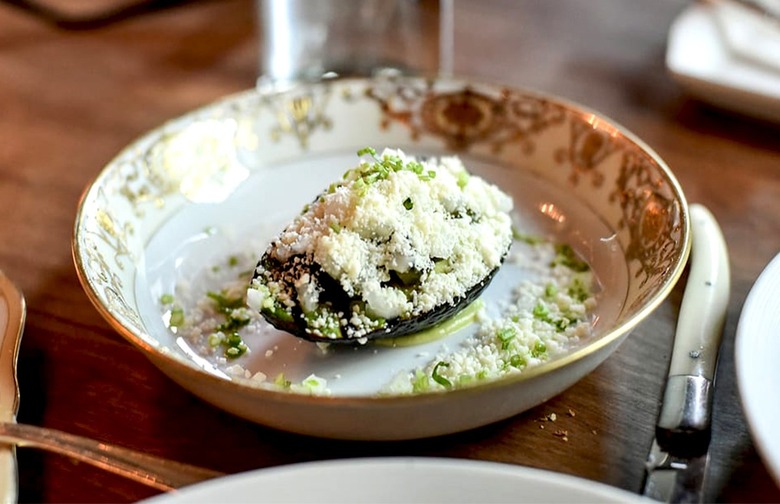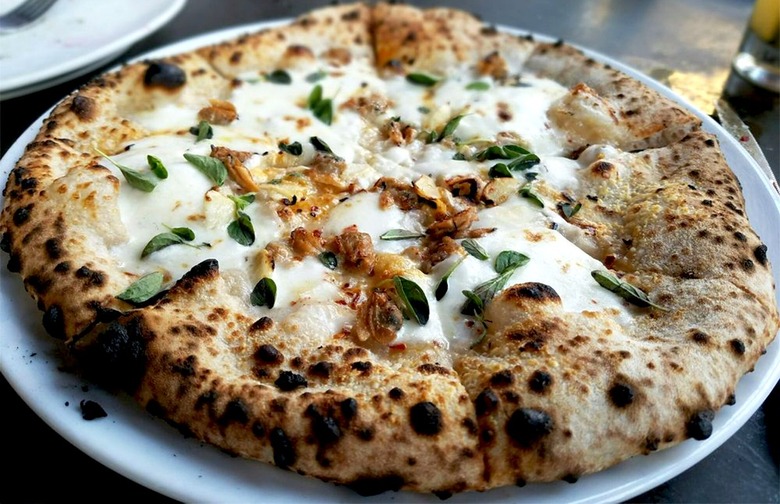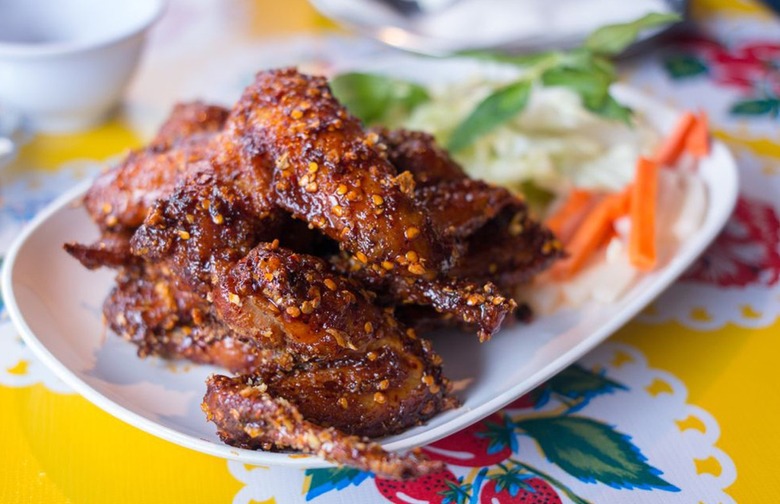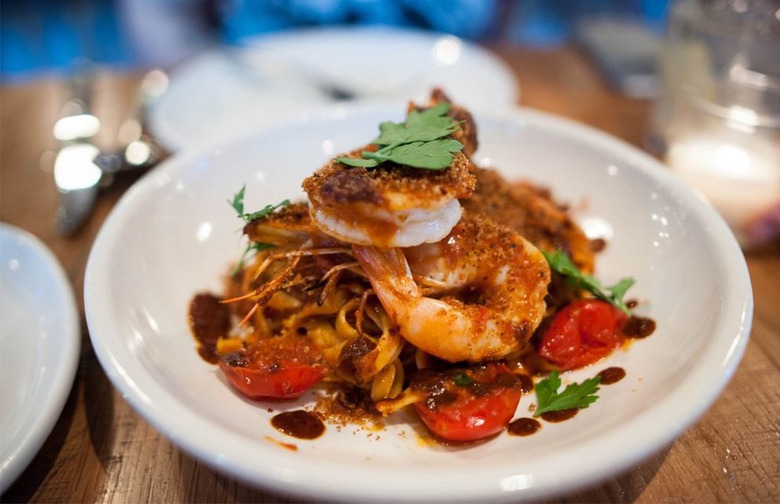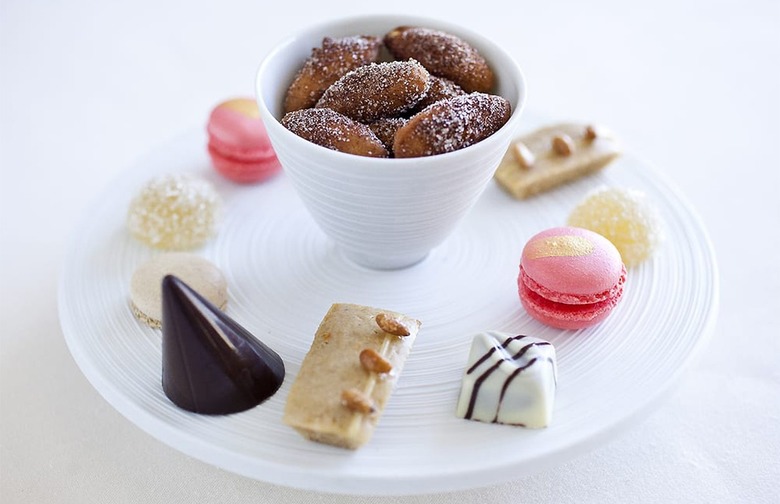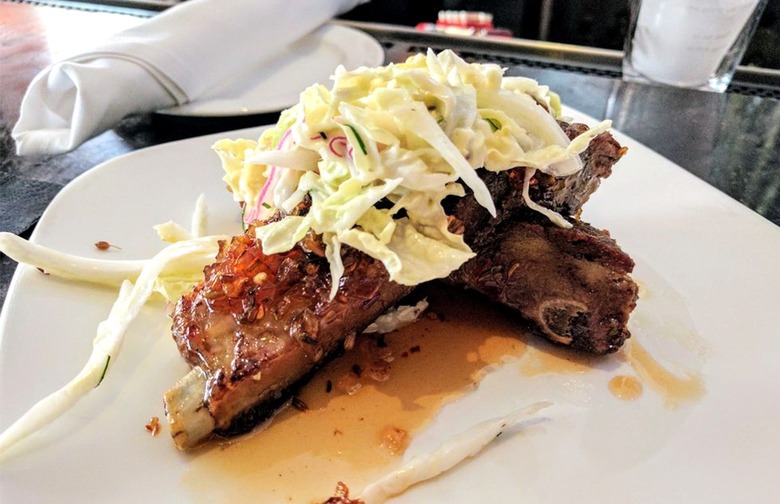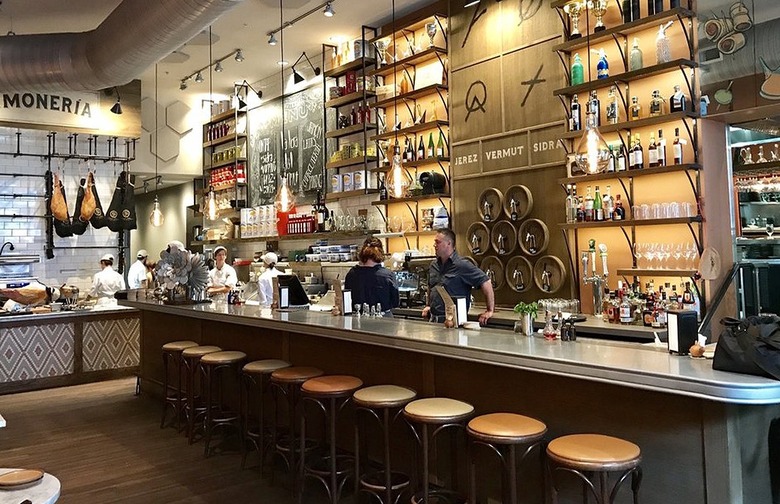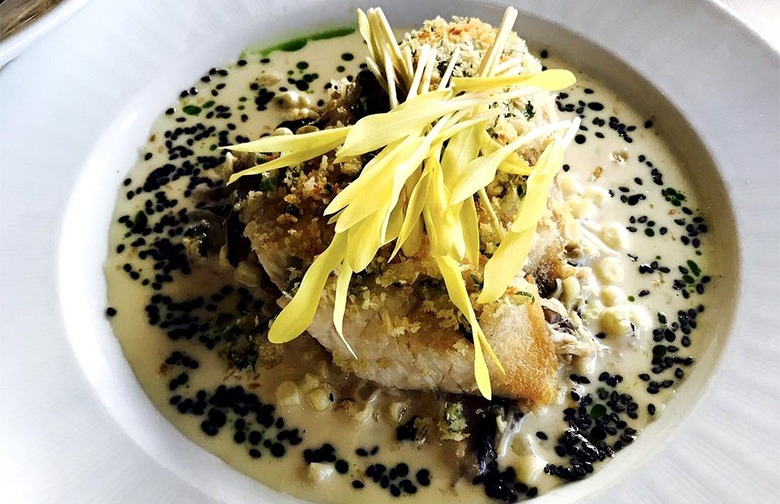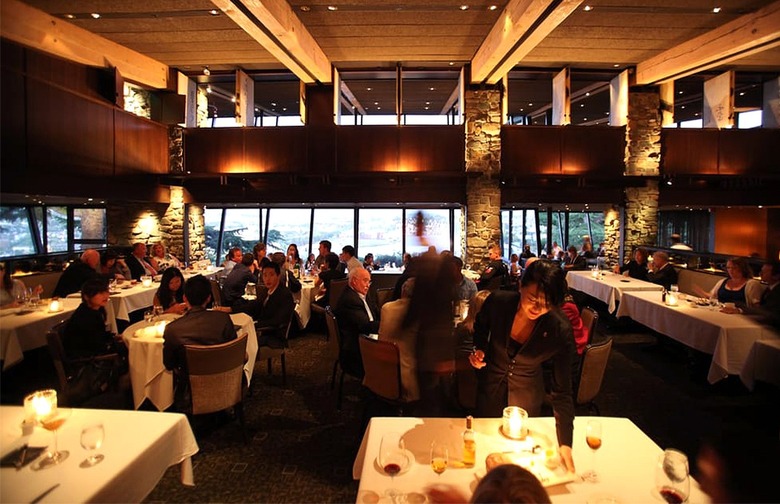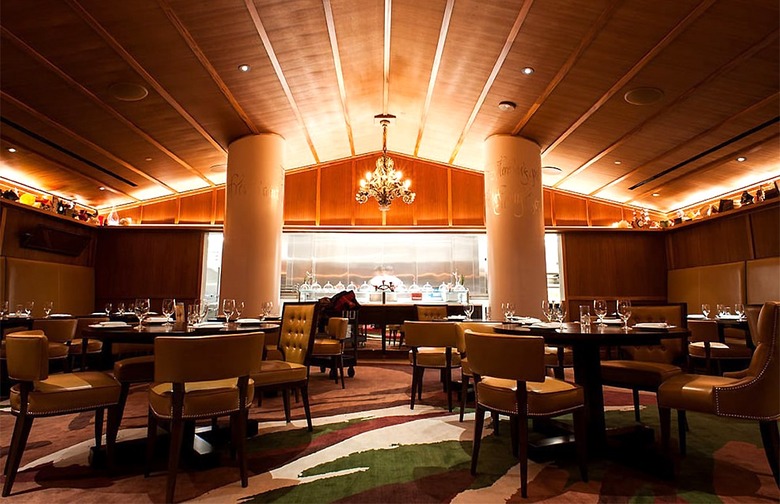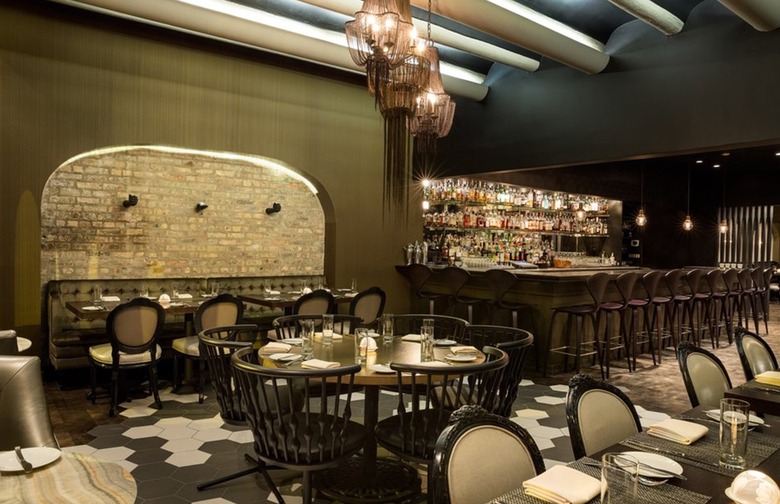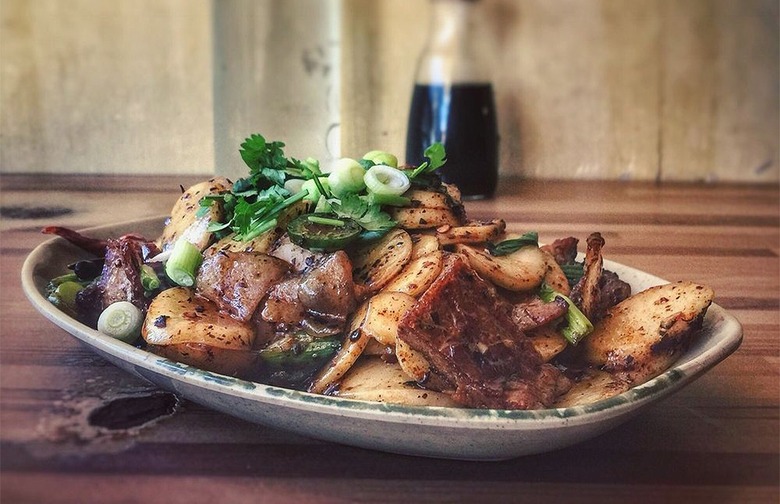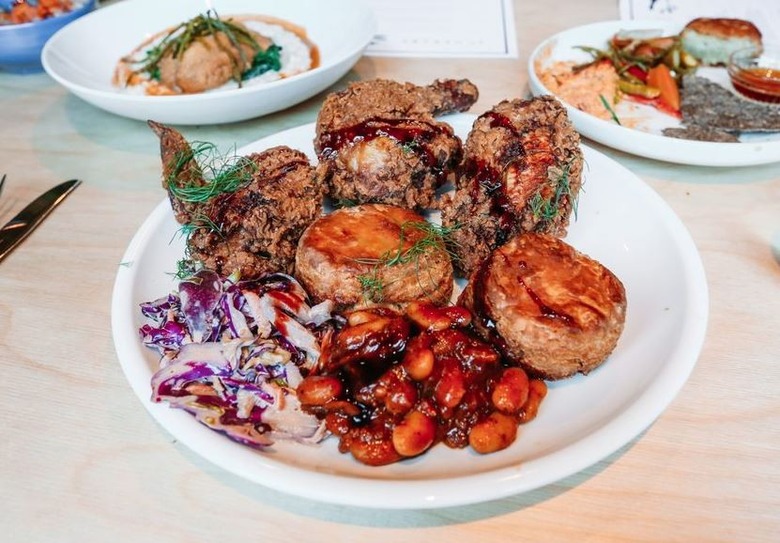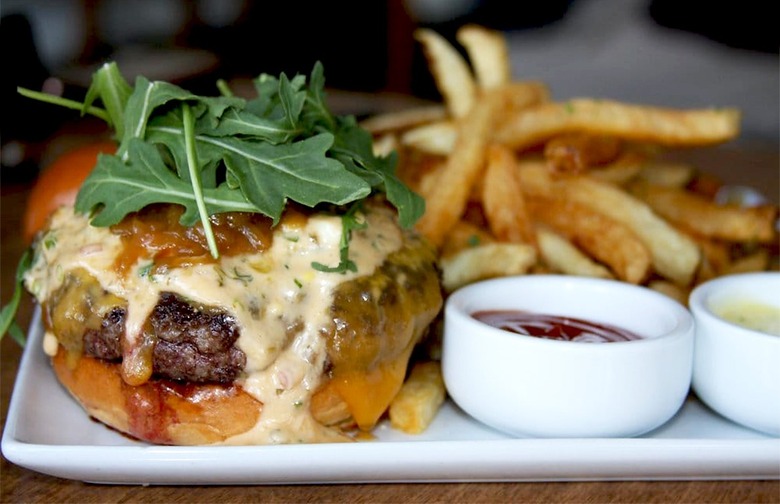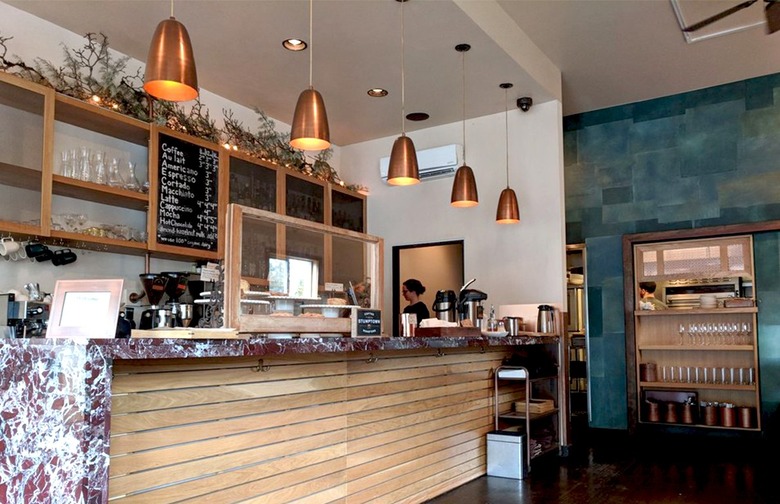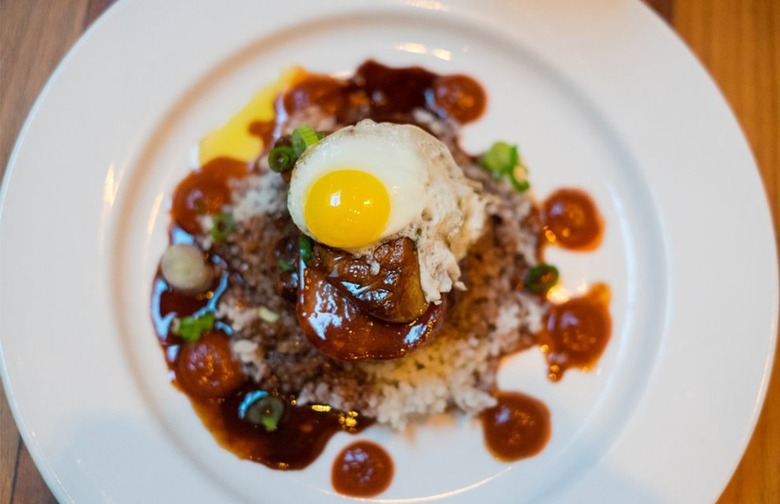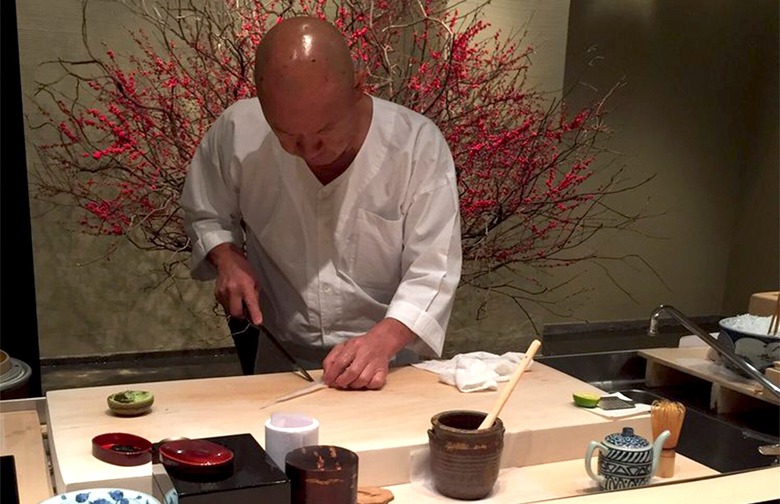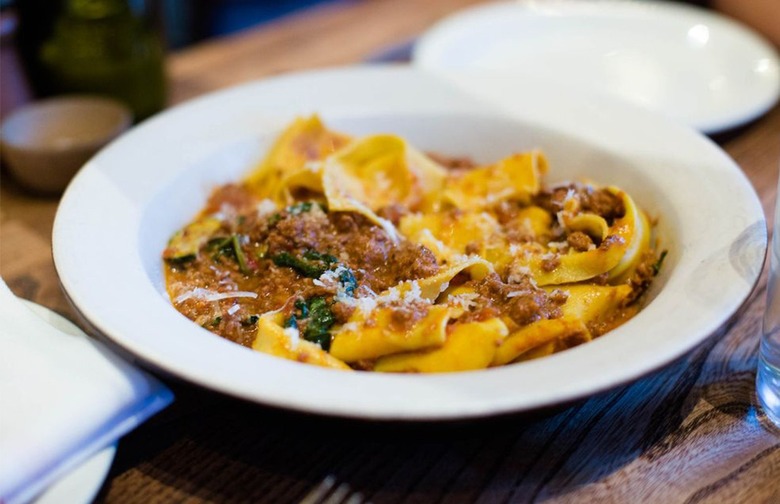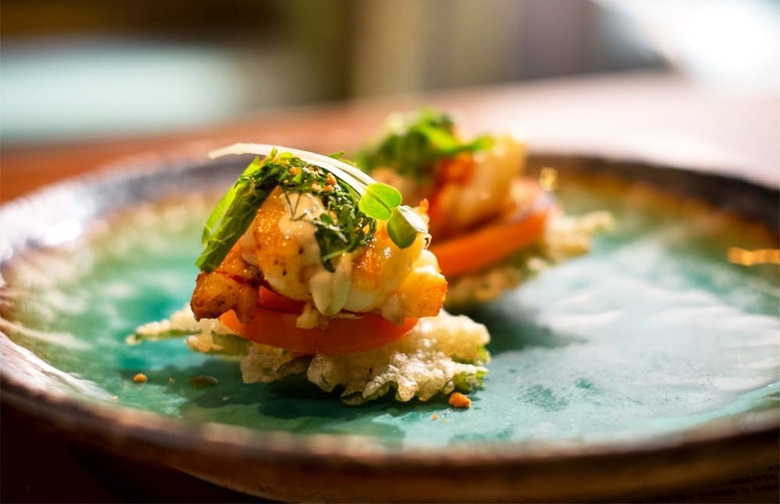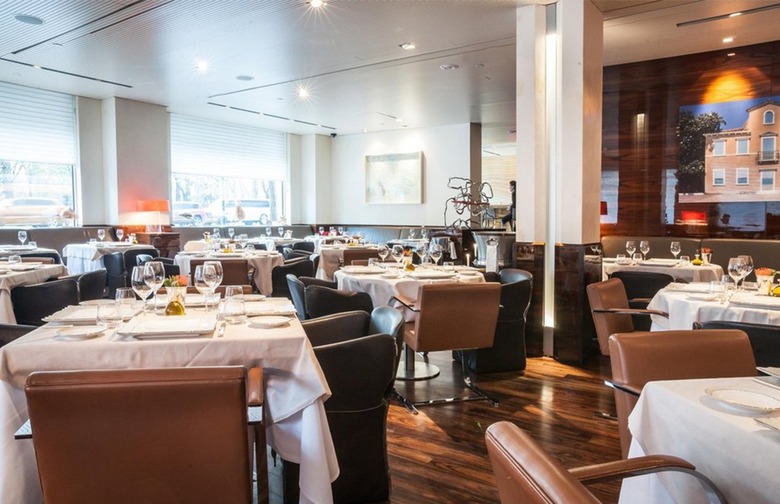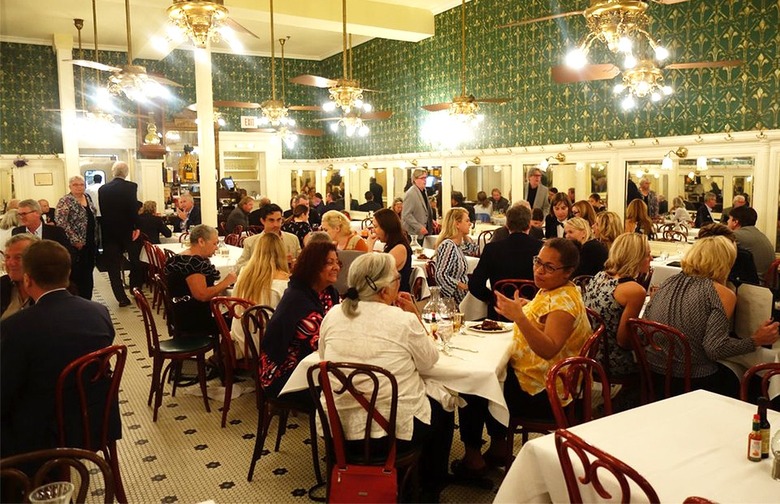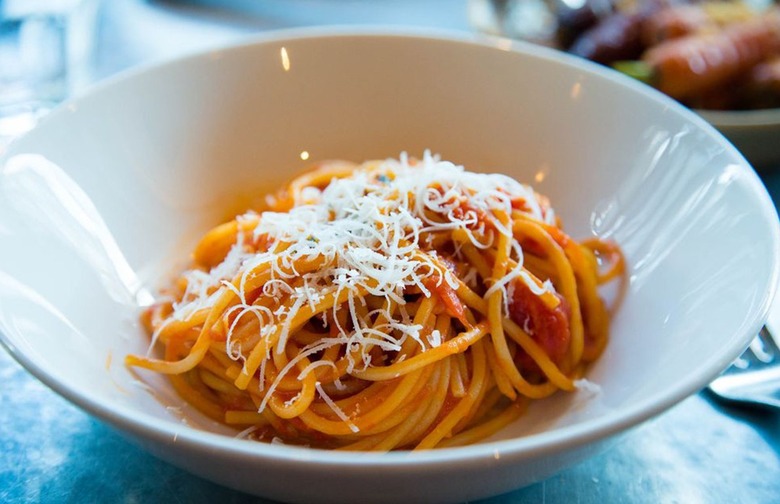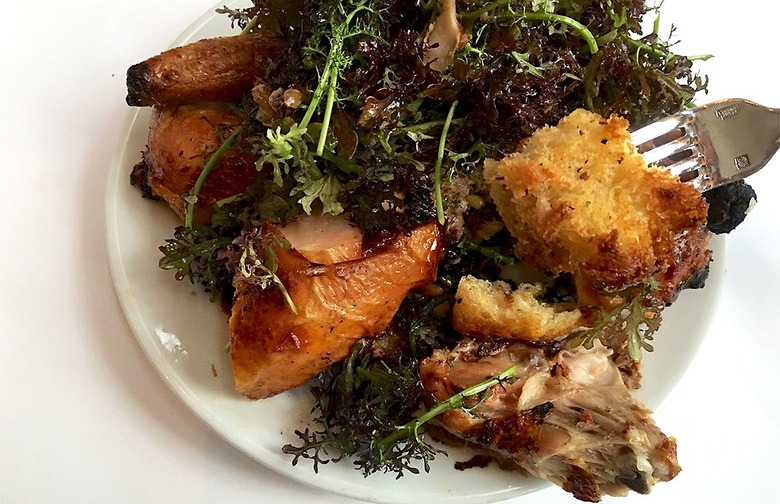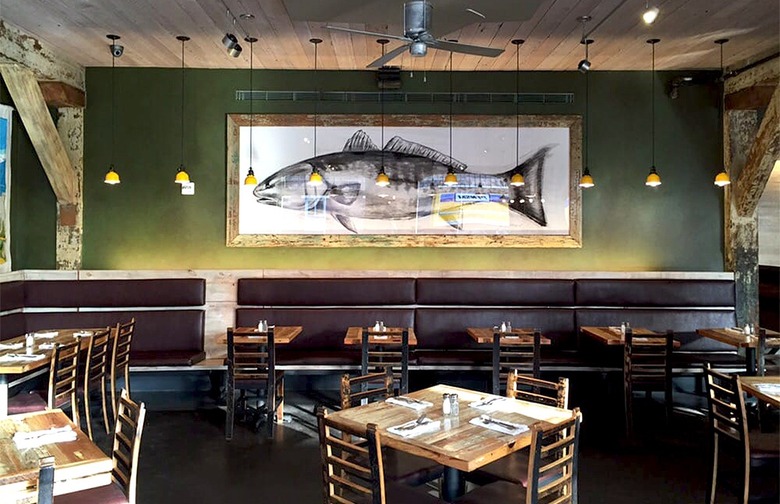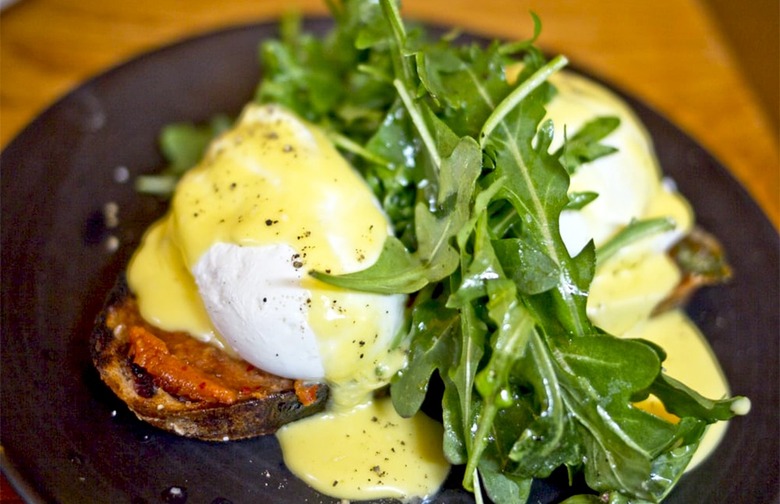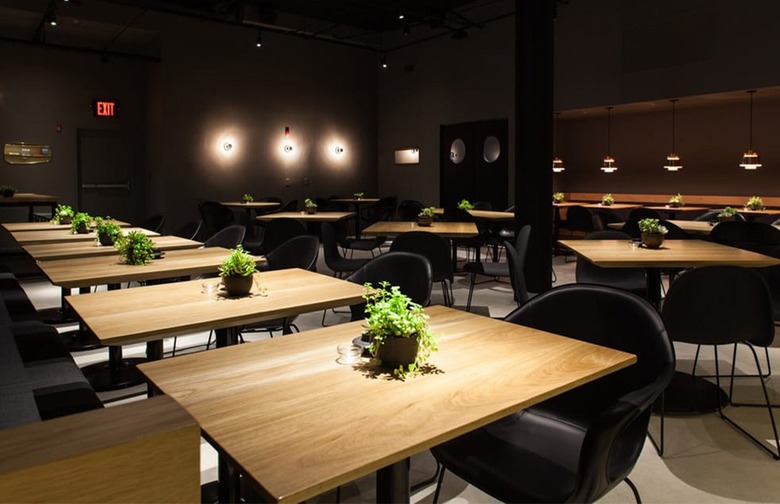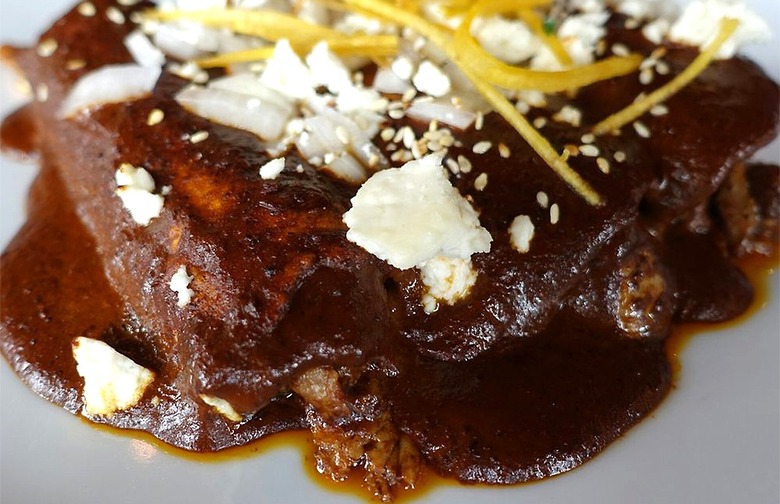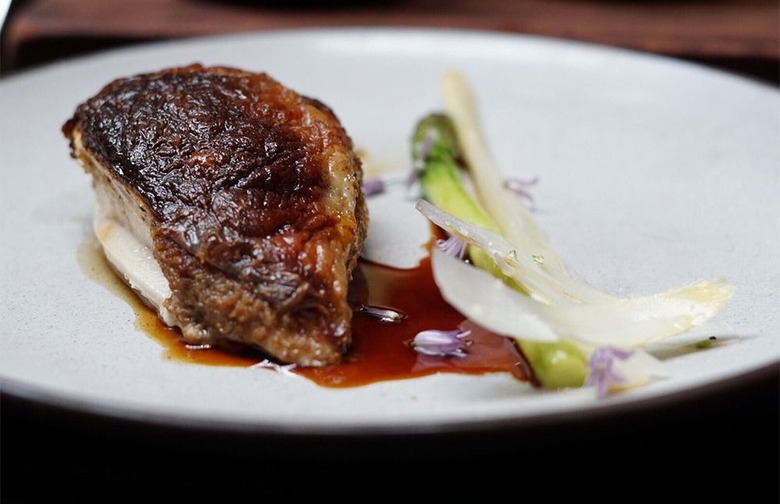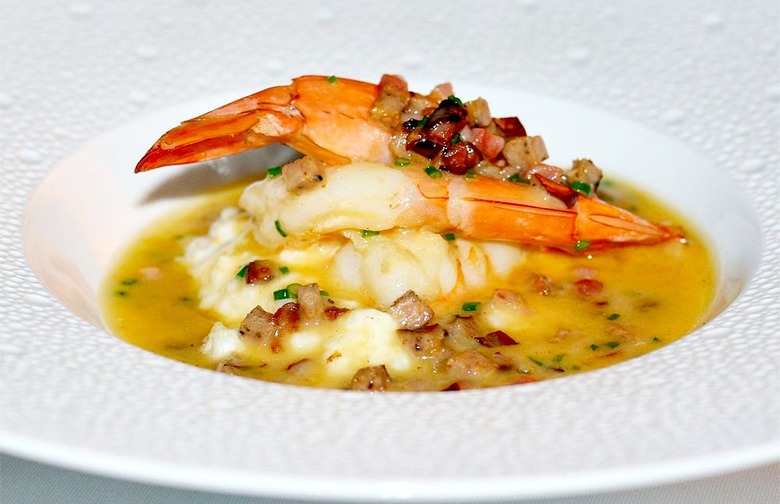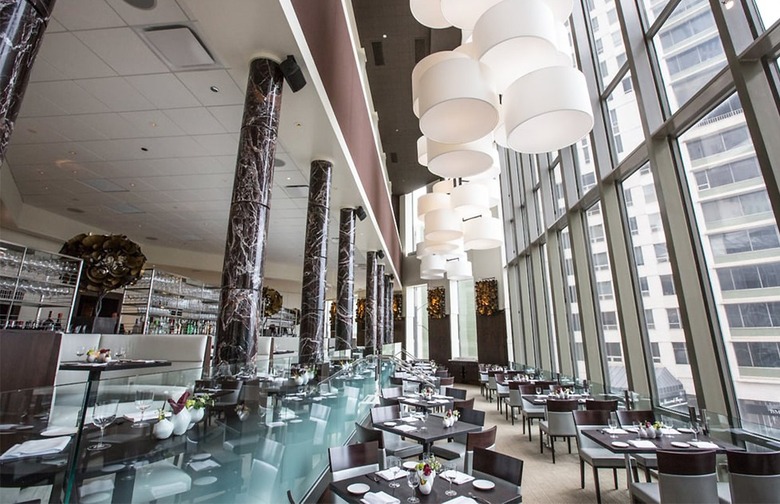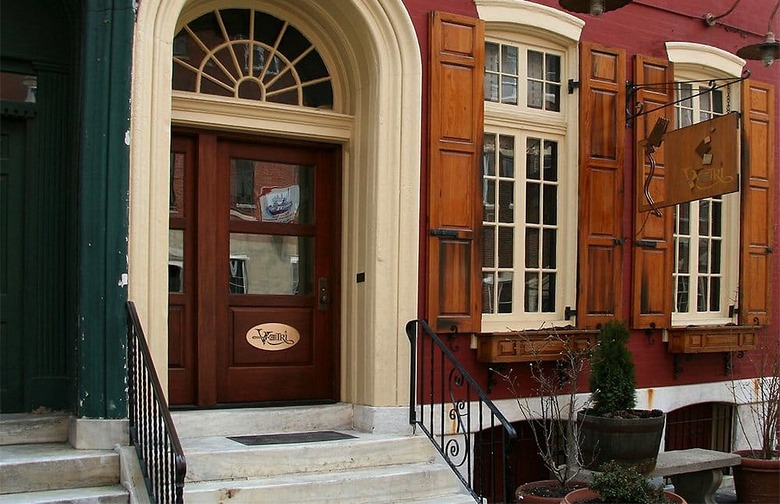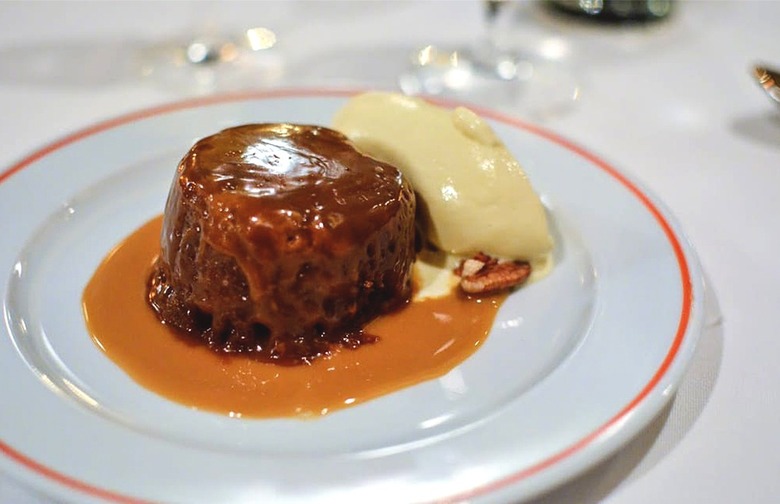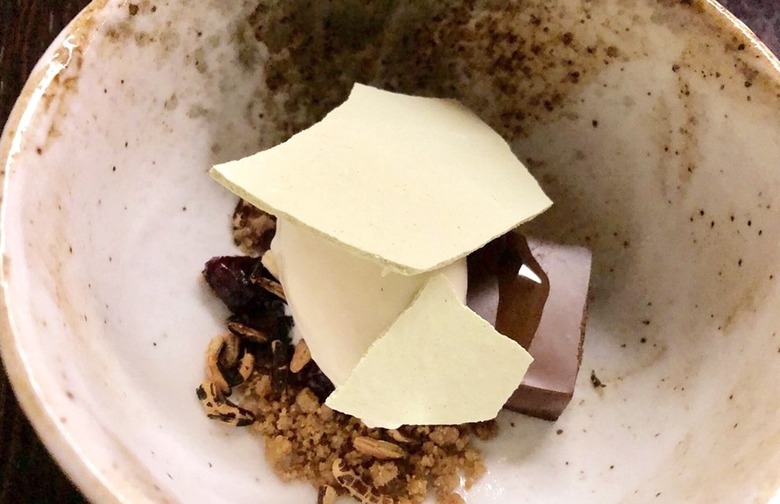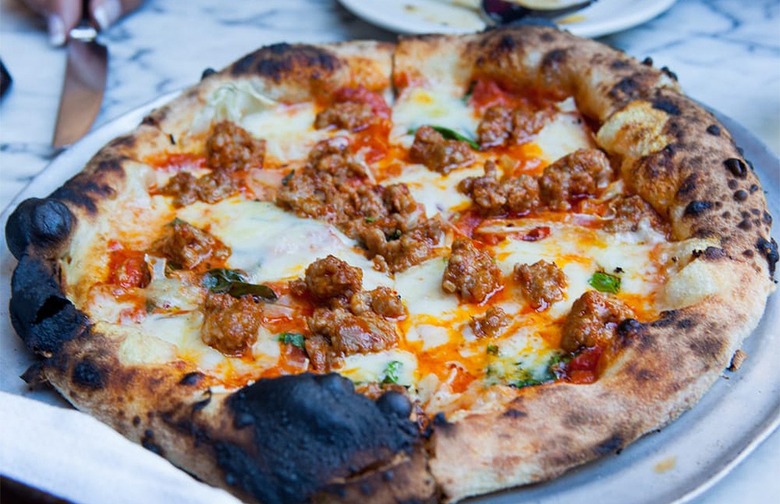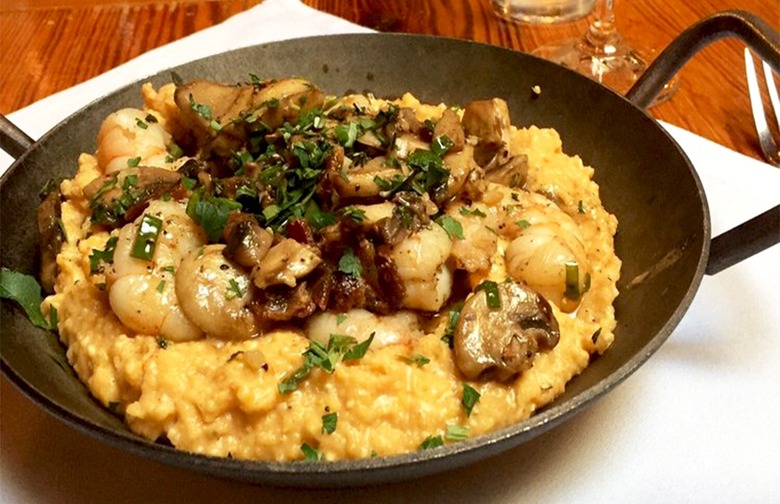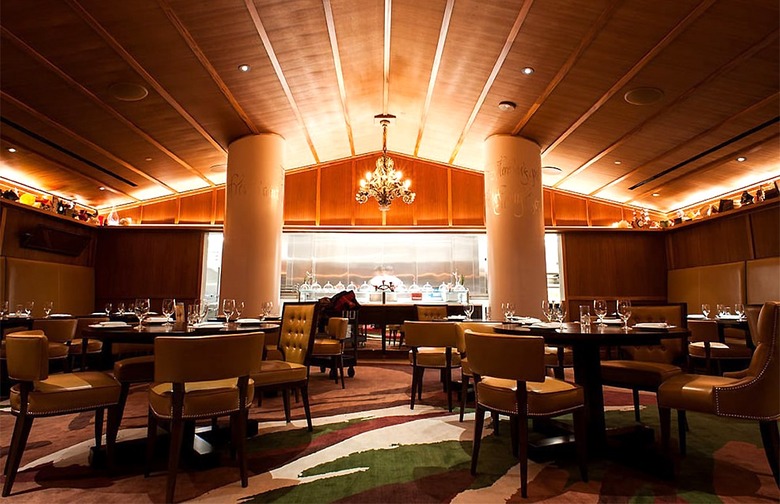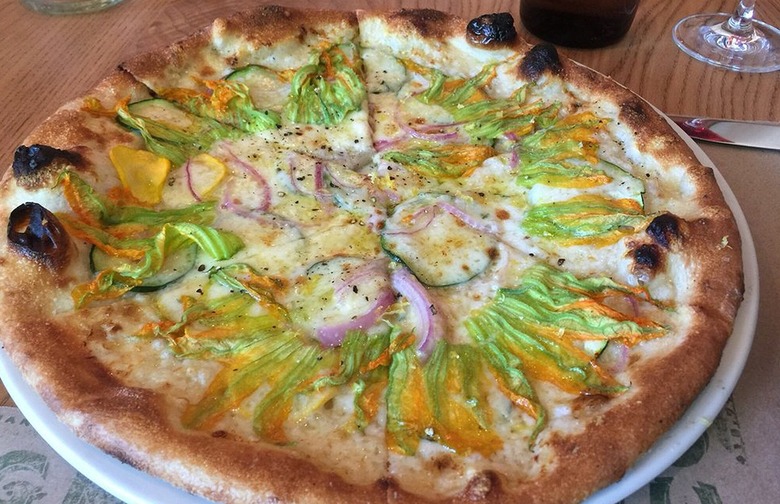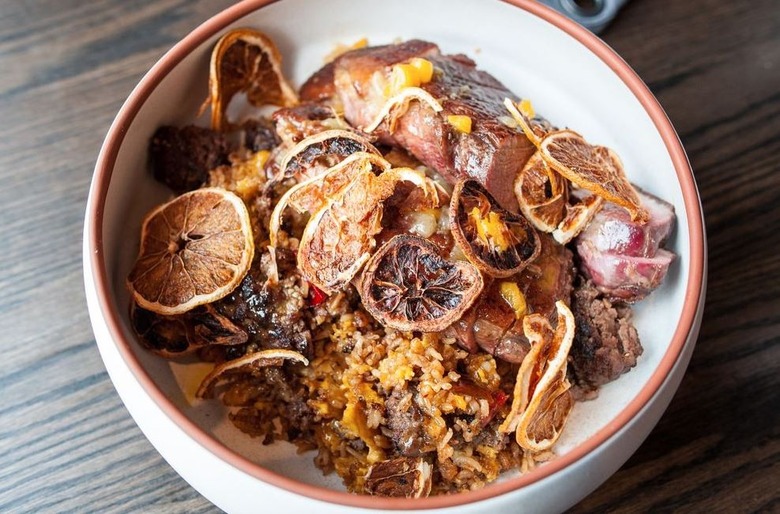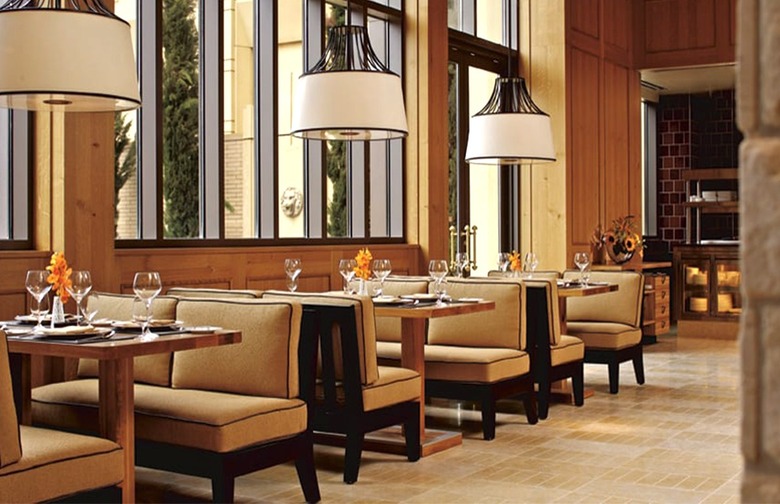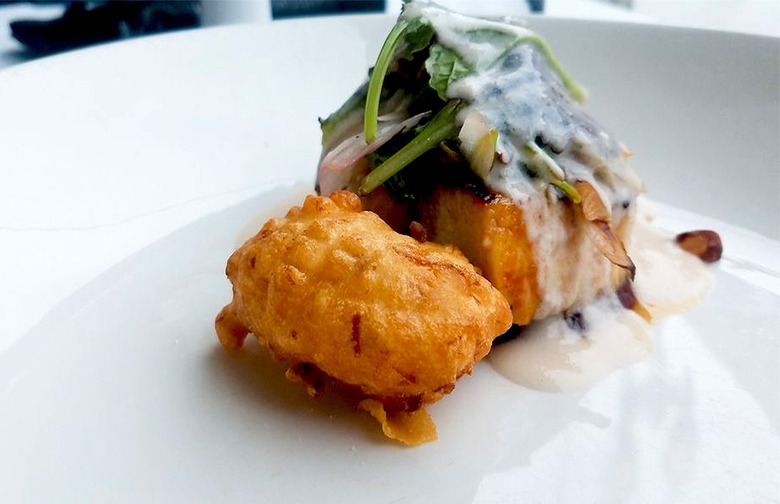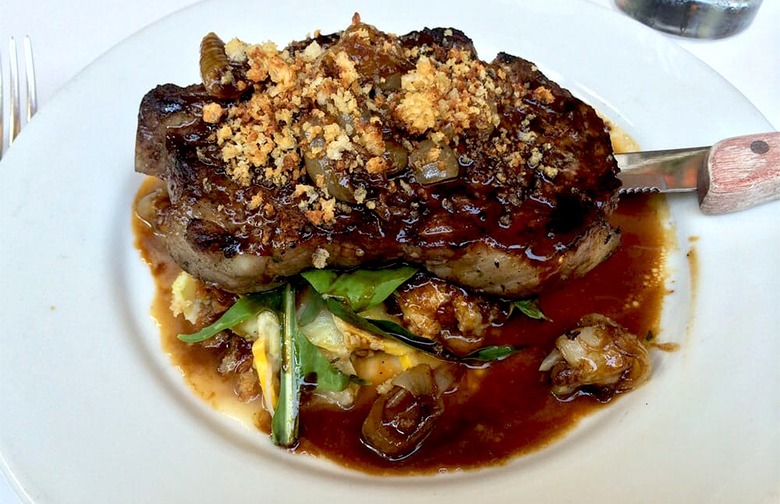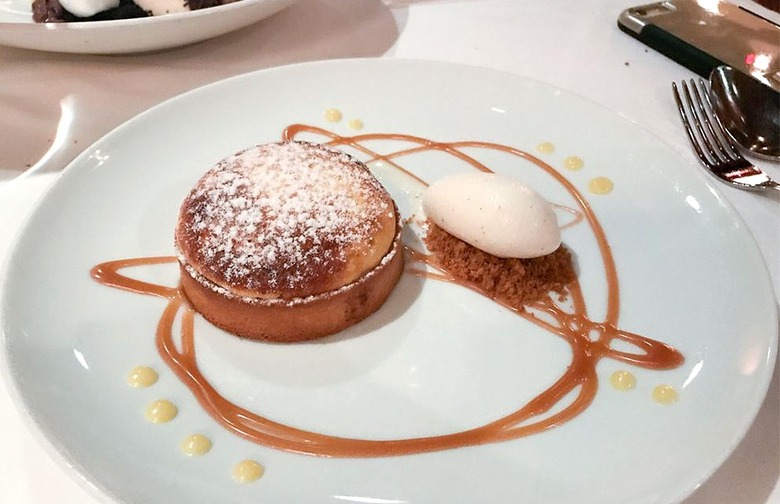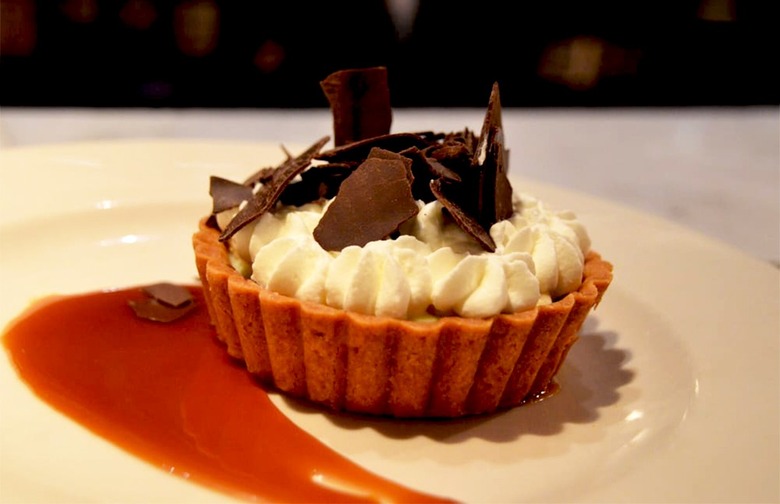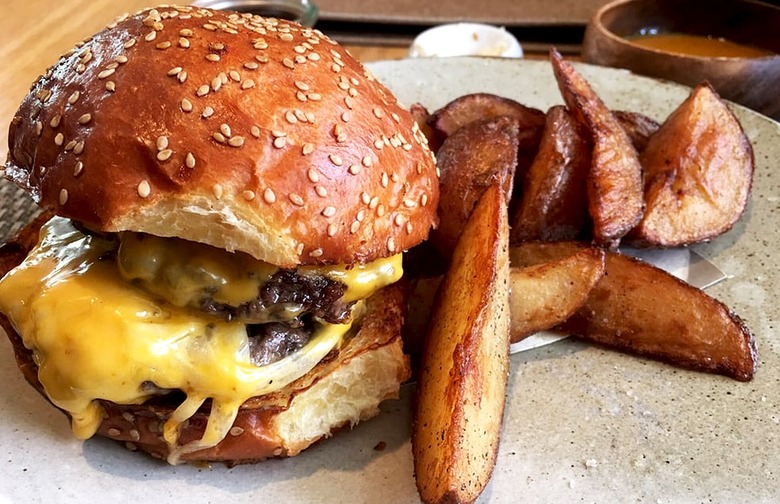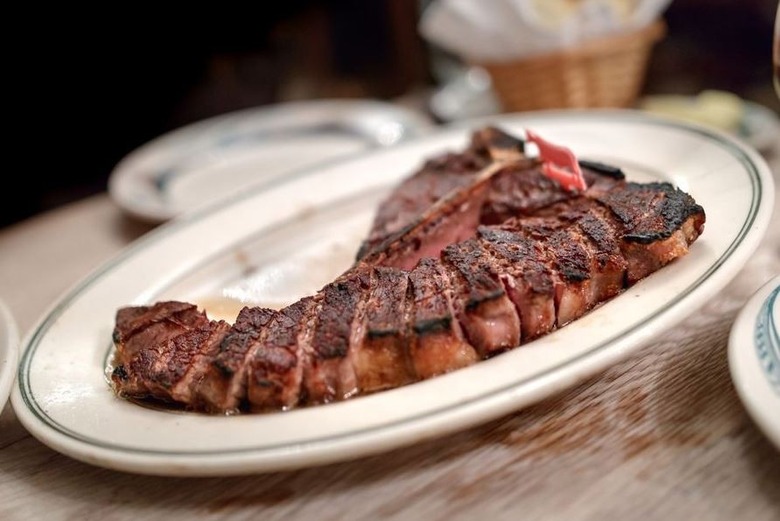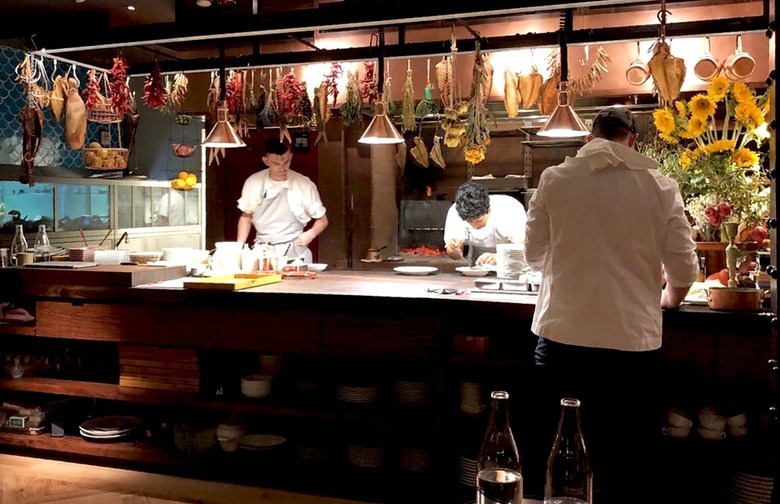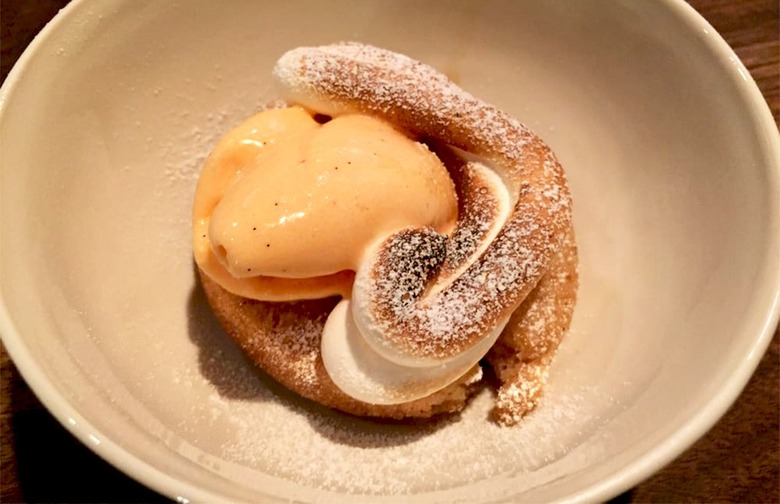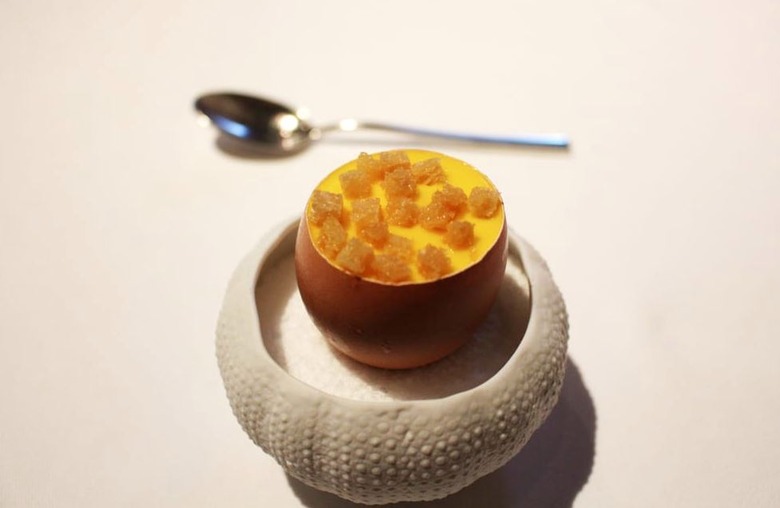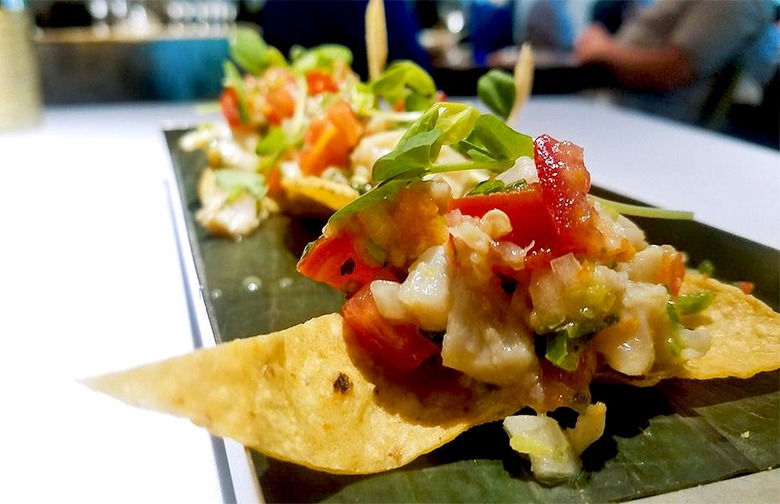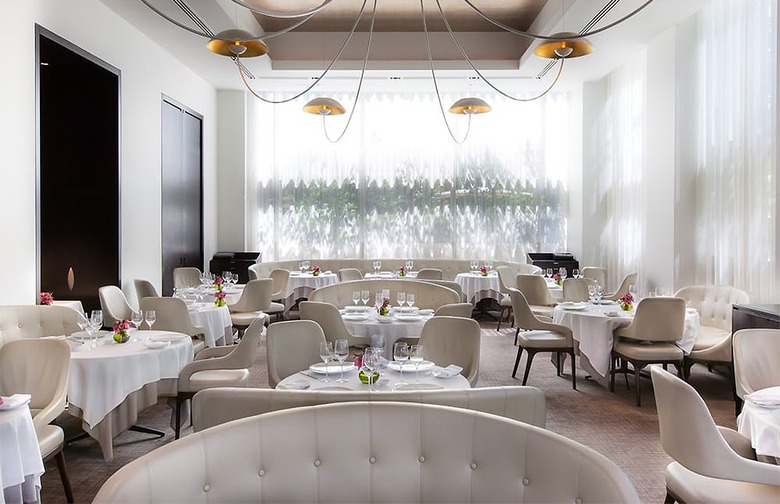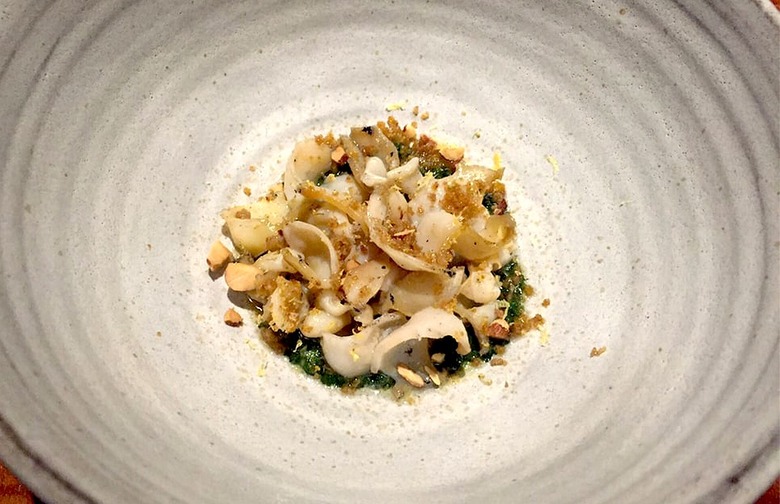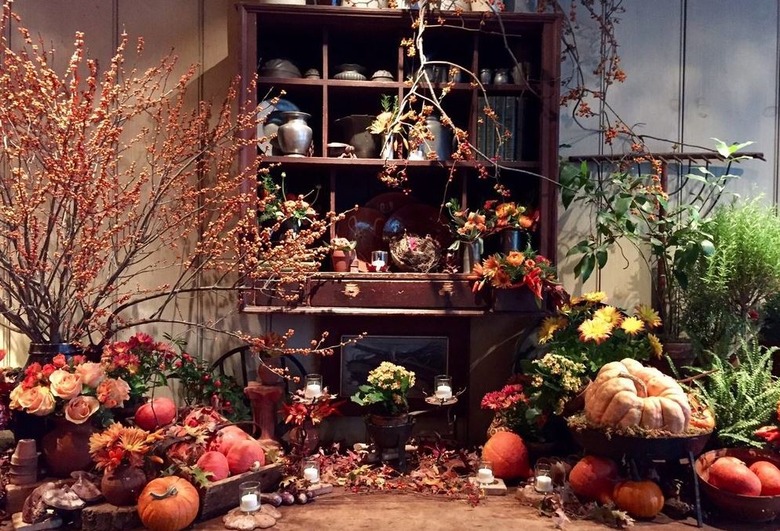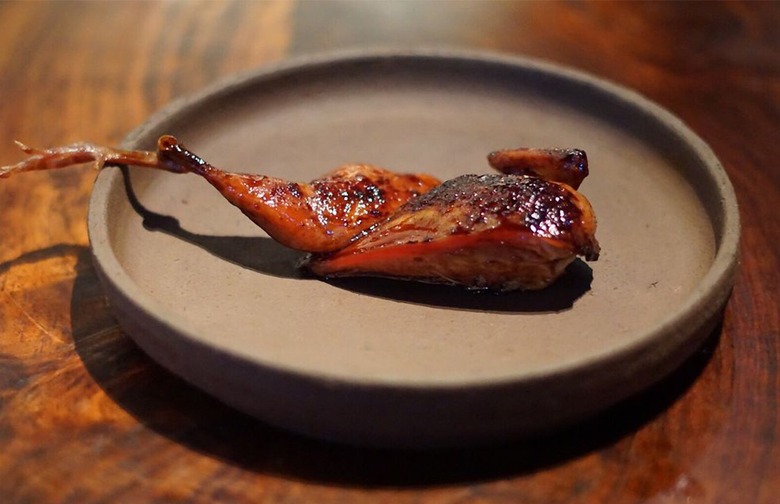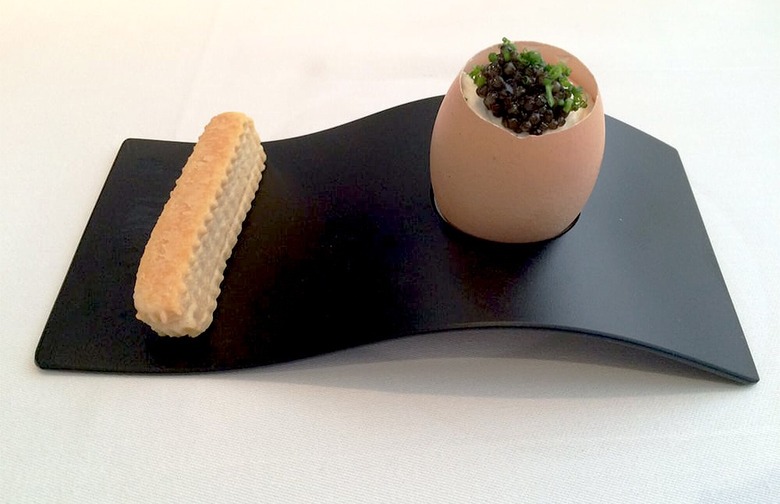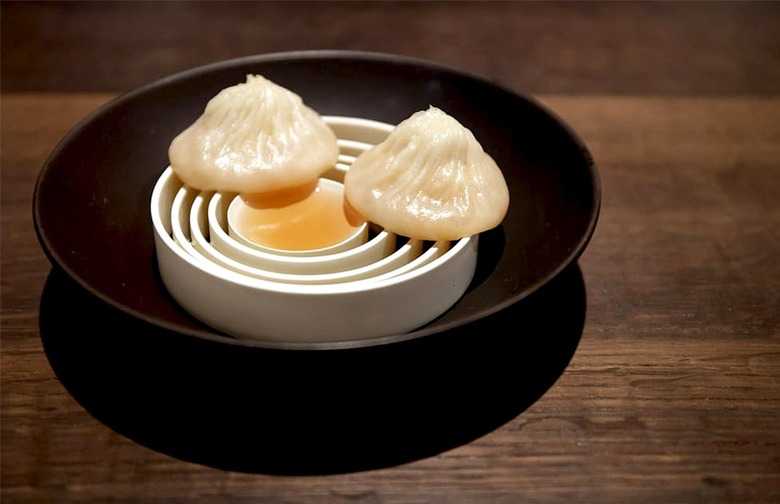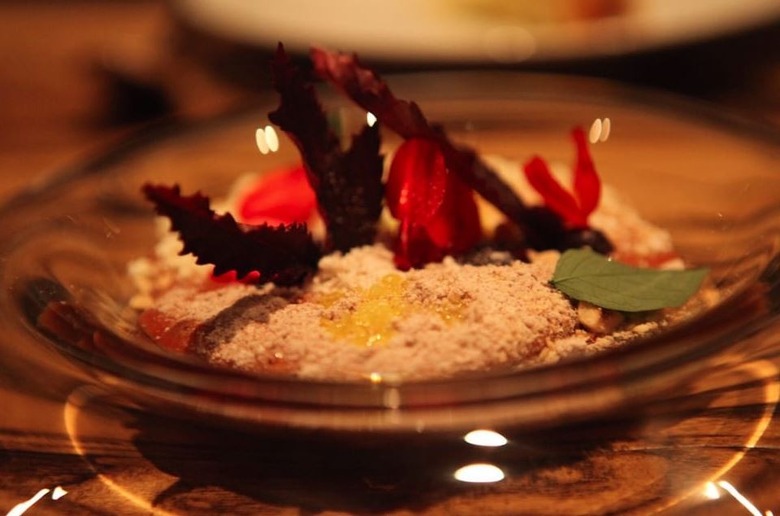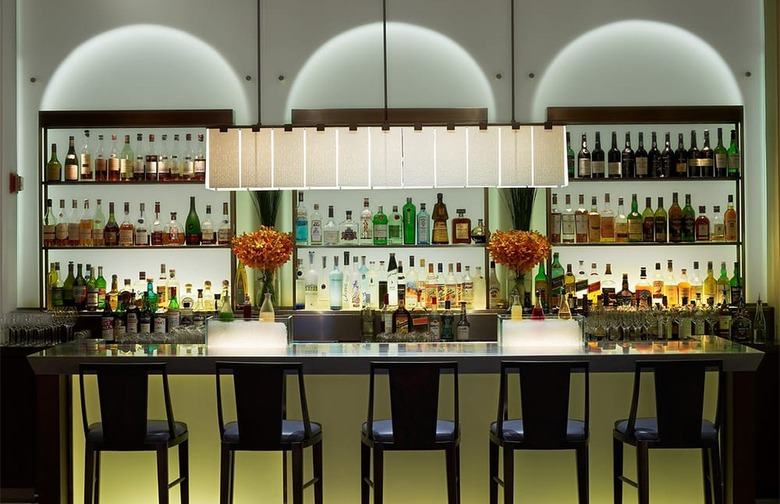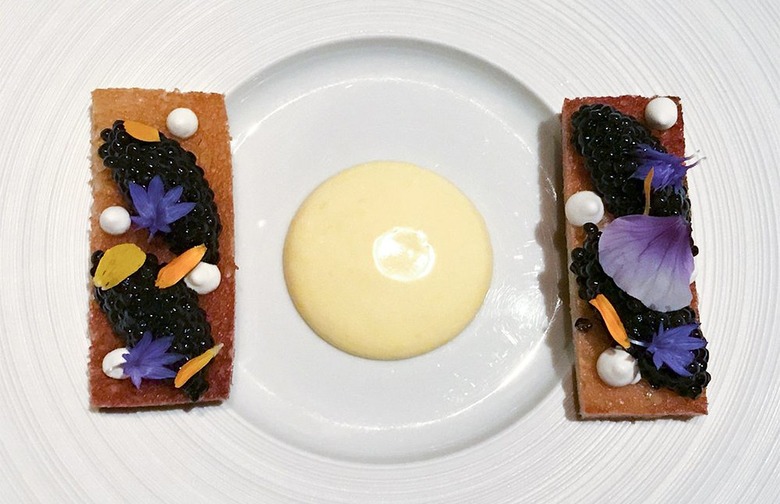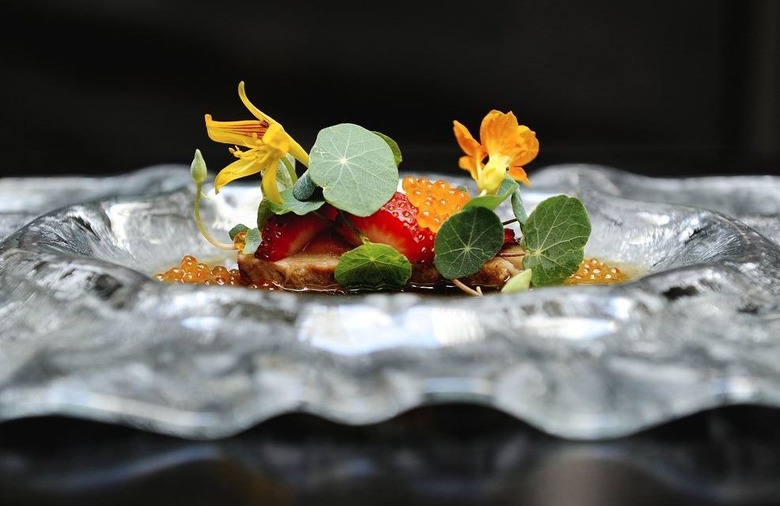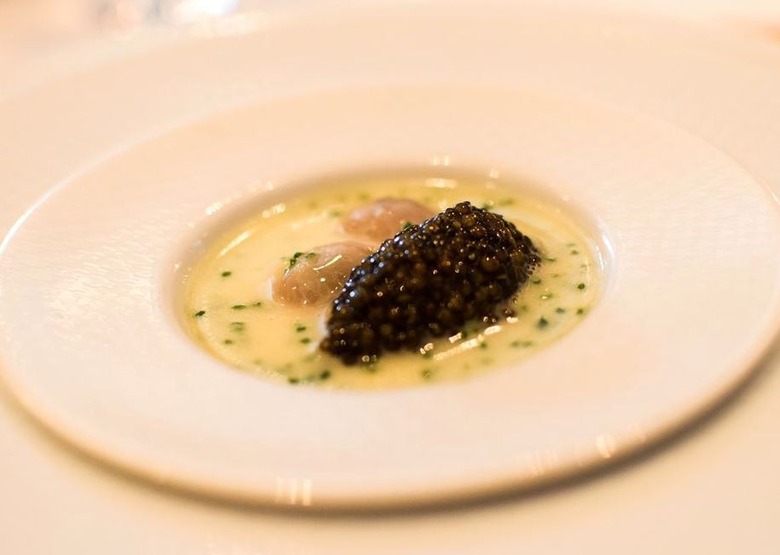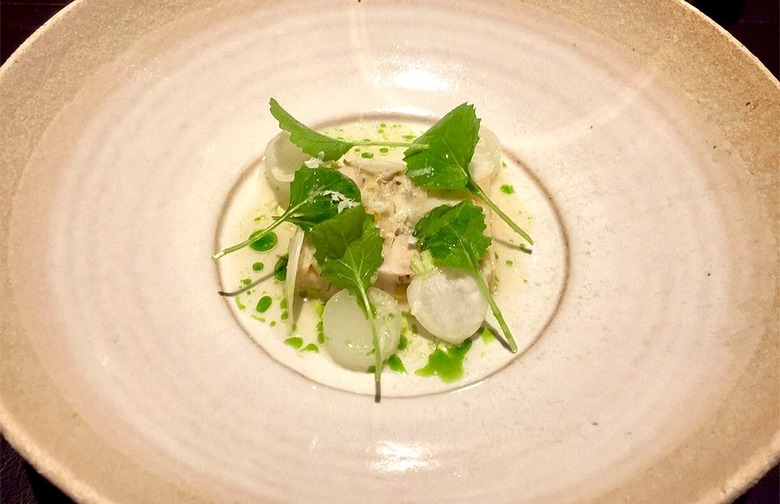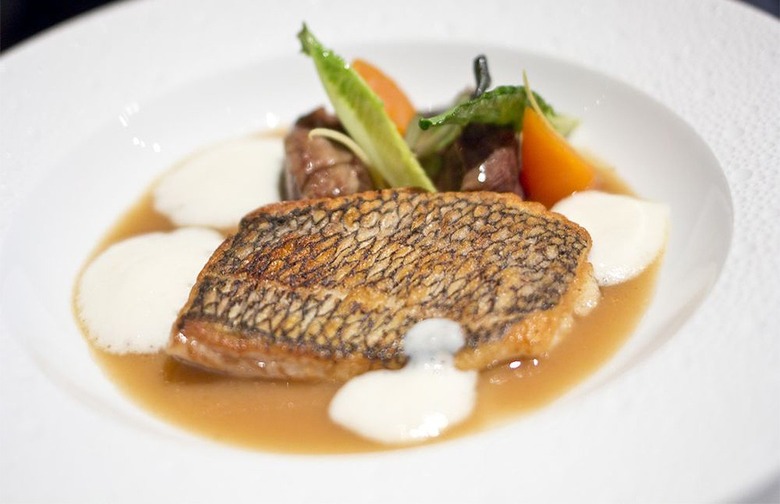The 101 Best Restaurants In America For 2019
We may receive a commission on purchases made from links.
Note: This is 2019's ranking of America's best restaurants. For the 2020 ranking, please click here.
What makes a good restaurant a "best"? Food that's better than just good, of course. A dining room and a level of service that suit the quality of what's on the plate. A good wine list and good beers and/or cocktails where appropriate. And then the less easily quantifiable stuff: personality, imagination (or intelligent commitment to a lack of same) and consistency. We're proud to present our ninth annual ranking of the 101 Best Restaurants in America.
The task of choosing our nation's best restaurants becomes more difficult every year, because the number of excellent places to eat continues to grow. As our interest in, and appreciation of, good food continues to increase — and as more great chefs train more younger good ones — fantastic food continues to spread across America.
In order to compile our ranking, we reached out to hundreds of restaurant experts of various stripes (restaurant critics, food and lifestyle writers, chefs, restaurateurs, and bloggers) around the country, asking them to vote for their top picks from more than 700 establishments that have achieved a level of renown, from the smallest small-town bistros to the biggest big-city gastronomic temples (You can find more details on our selection process here).
The cities with the most restaurants in our ranking are Las Vegas (four restaurants), New Orleans (five restaurants), Los Angeles (eight restaurants), Chicago (12 restaurants), San Francisco (13 restaurants), and New York City (16 restaurants). We recognize that many of these restaurants are out of most people's price range, which is why we also publish a ranking of America's 101 Best Casual Restaurants, accommodating the pizzerias and taquerías and burger joints and fried chicken shacks and such that aren't included here, but that we all love (and sometimes, frankly, prefer to the more serious places ranked here).
The sheer quality and diversity demonstrate that we live in a truly exciting time for food in the United States. We're pleased to unveil our 2019 list of America's best restaurants.
#101 Fore Street (Portland, Maine)
Fore Street's wood-roasted specialties have kept the restaurant at the top of the heap in Portland, Maine, since 1996. Locally harvested mussels, diver scallops, turnspit-roasted chicken and pork loin, marinated hanger steak, and other basics, accompanied by vegetables grown or foraged from nearby farms and fields, are the staples of the seasonally changing menu here. Fore Street is all about hearth, rustic charm, and a lack of artifice. The open kitchen at center stage fascinates, its chefs behind a vast butcher block working the brick oven as open flames lick the meat that turns on a rotisserie, embers flying.
#100 Scampo (Boston, Massachusetts)
James Beard Award-winning chef Lydia Shire is one of Boston, Massachusetts' legendary chefs, and her restaurant, Scampo, is one of the best Italianish restaurants you'll ever dine at. While Italian at heart, Shire isn't afraid to incorporate a tandoori oven or Spanish Ibèrico ham into the mix, and the menu is fun and playful. Handmade breads come in seven varieties. There's a full "mozzarella bar" with five different seasonal fresh mozzarella-based dishes (just opt for the mozzarella tasting — you know you want to). Spaghetti comes topped with cracklings and hot pepper and pizza is topped with white clam and bacon, among other things. Entrées include brick chicken with black garlic purée and Meyer lemon risotto, cotechino sausage ravioli with truffle foam and purple kale, and braised short rib with whipped celeriac. It's one of those menus where literally everything looks delicious... but we'll be waiting for Friday night, when the special is roast suckling pig.
#99 Cochon (New Orleans, Louisiana)
A serious cult favorite since it opened in 2006, Cochon is the domain of pork-loving chef Donald Link, who's been nominated for a James Beard Award every year since 2015. Inspired by Louisiana's Cajun and Creole culinary traditions, Link serves dishes like roasted shrimp with hog jowls and Louisiana cochon (roast pig) with turnips, cabbage, and cracklings, as well as such non-porcine delights as fried alligator with chile garlic aioli and rabbit with dumplings. And we can't talk about Cochon without also giving a shout-out to Cochon Butcher, the hybrid meat market, sandwich shop, and wine bar located right next door, which perennially makes our list of America's Best Casual Restaurants.
#98 Osteria Mozza (Los Angeles, California)
B&B Hospitality's Osteria Mozza, helmed by La Brea Bakery founder Nancy Silverton, is a really good California restaurant. There's a mozzarella bar with some dozen options; a menu that includes fantastic (and sometimes unusual) pasta — like goat cheese ravioli with "five lilies," meaning five members of the allium family; maltagliati with lamb ragu, olives, and mint; and squid ink chitarra freddi with Dungeness crab, sea urchin, and jalapeños — and main dishes ranging from grilled whole orate wrapped in radicchio with olio nuovo to porcini-rubbed rib-eye bistecca.
#97 The Greenhouse Tavern (Cleveland, Ohio)
The flagship restaurant of acclaimed Cleveland-born chef Jonathon Sawyer, who won a James Beard Award (Best Chef: Great Lakes) in 2015 for his efforts, The Greenhouse Tavern has played a huge role in putting Cleveland, Ohio, back on the culinary map. Sawyer's signature style and sense of whimsy translates to a meat-heavy menu that's full of bold, smoky, tangy, umami-rich flavors, and he's turning local ingredients into dishes you have to see (or eat) to believe. These include crispy pig ears with sesame barbecue sauce and crispy shallots; foie gras steamed clams with butter and red onion brûlée; barrel-aged Tabasco fried chicken; and pan-fried pork chop saltimbocca with country ham, scrapple, and red-eye gravy. If it's not already obvious, a meal at The Greenhouse Tavern is a culinary adventure, a ride that you'll want to take again and again.
#96 Empire State South (Atlanta, Georgia)
You've probably spotted chef Hugh Acheson as an occasional judge on "Top Chef," and this restaurant is the reason behind his renown as one of the South's most beloved chefs. At Empire State South, he's taking seasonal Georgia ingredients and turning them into delicious and playful takes on Southern cuisine. Dishes like shrimp and grits and a fried chicken biscuit with pimento cheese and bacon marmalade have turned it into a brunchtime destination, but at night dishes like grouper with farro verde, dashi, green tomato, and charred cabbage; chicken with Carolina Gold rice, finger lime, and espelette; and lamb with turkey craw beans, artichoke, and leek are up there with any of the region's top fine dining offerings.
#95 Hominy Grill (Charleston, South Carolina)
A Charleston, South Carolina, must-visit, the comfortable and inviting 23-year-old landmark Hominy Grill showcases the classic Lowcountry cooking of chef Robert Stehling as well as his dedication to using only the finest ingredients available in his Southern-style breakfast and lunch dishes. Stehling is taking the best aspects of Lowcountry cuisine — grits, biscuits, she-crab soup — and bringing them to new heights: Shrimp and cheese grits are kicked up with scallions, mushrooms, and bacon; biscuits are stuffed with fried chicken and cheddar and topped with sausage gravy; and grits come topped with your choice of roasted mushrooms and leek cream, slow-smoked pork belly, or sesame-fried catfish with Geechee peanut sauce. Other brunchtime standouts include heirloom buckwheat pancakes with peach syrup and sorghum butter, an heirloom cornmeal waffle with hot chicken thighs and strawberry syrup, and some of the finest fried green tomatoes on Earth.
#94 Ristorante Bartolotta (Milwaukee, Wisconsin)
Renowned chef Paul Bartolotta's flagship Italian restaurant, Ristorante Bartolotta, is located on the outskirts of Milwaukee, Wisconsin, and it's been drawing guests from downtown for more than 20 years. The dining room is rustic and elegant, with white tablecloths, old photos on the walls, and an air of relaxed sophistication. A must-order is the Uovo in Ravioli (a single large raviolo encasing ricotta, spinach, and a whole runny egg yolk). Other standouts include hand-cut pappardelle with slow-braised duck ragù, a half chicken roasted under a brick, and whatever is on the chef's three-course seasonal menu.
#93 Holeman & Finch (Atlanta, Georgia)
Atlanta, Georgia, must-visit Holeman & Finch serves one of the best burgers in America, some of the best fried chicken in America, and one of the best brunches in America, and we've named it one of the best bars in America, so how could it not also be one of the 101 best restaurants in America? If the aforementioned accolades don't make it clear, this restaurant, under the auspices of master chef Linton Hopkins, serves brilliant-yet-accessible creations that will keep you enthralled time and time again, and a total revamp in honor of its 10th anniversary in 2017 gave it more than a fresh coat of paint. Every meal here is an adventure: Keep it simple with some pimento cheese, bacon caramel popcorn, and a cheeseburger (made entirely from scratch and seriously one of the best you'll ever have), or go big with beef tartare, crisp sweetbreads with buttermilk spoonbread, and a legendarily famous pasta carbonara.
#92 State Bird Provisions (San Francisco, California)
What started off as a place to serve fried quail to the masses, ended up as one of California's hottest restaurants, even snagging a 2013 James Beard Award for Best New Restaurant of the Year. Stuart Brioza and Nicole Krasinski, the husband-and-wife team behind State Bird Provisions, serve about 30 small, clever plates via dim sum-style rolling carts. The fried quail (that is, the official state bird of California: California valley quail, known for its hardiness and adaptability), buttermilk-marinated and encrusted with bread and pepita crumbs, is the signature dish, but don't overlook the section devoted entirely to pancakes (like whole-grain Fiscalini cheddar pancakes with apple and walnut!) and toast.
#91 Rose’s Luxury (Washington, D.C.)
Rose's Luxury, a small, no-reservations converted townhouse in Washington, D.C., is the brainchild of chef Aaron Silverman, who won 2016's James Beard Award for Best Chef: Mid-Atlantic and also runs another major D.C. hotspot, Pineapple and Pearls. His small menu showcases international flavors (occasionally several in one dish) with a decidedly American twist, and even though the selection is small (just a handful of small plates, a few pastas, and two family style dishes), it's always big on flavor and creativity. Vegetarian options are always clearly identified, prices are very reasonable, and 25 cents from every meal served goes toward feeding children in need.
#90 Bestia (Los Angeles, California)
Located in an old industrial warehouse in the Arts District of downtown LA, the only clue tipping diners off to Bestia's location is its spray-painted name and valet stand in the alley by the main entrance. Inside, Bestia has an upscale urban architectural feel with exposed brick walls, concrete floors, and an open kitchen where chef Ori Menasche (who owns the restaurant with his wife, pastry chef Genevieve Gergis) turns out near-miraculous Italian-inspired creations that have made his restaurant one of LA's toughest reservations since it opened three years ago. Standout menu items include a wide selection of house-made salumi, roasted marrow bone with spinach gnocchetti, pizza with house-made spicy 'nduja and black cabbage, and spaghetti with lobster and sea urchin.
#89 Pok Pok (Portland, Oregon)
When Andy Ricker opened Pok Pok in 2008, he took Oregon, the Pacific Northwest, and many of the nation's most devoted eaters by storm with his uniquely refined approach to Southeast Asian street food (earning himself a James Beard Award for Best Chef: Northwest in 2011). His Vietnamese-inspired chicken wings, charcoal roasted chicken, and green papaya salad remain must-order dishes, but the massive variety of regional Thai dishes — prepared faithfully to the recipes Ricker has meticulously tracked down during his trips to Thailand — make every meal an adventure. The New York location sadly closed up shop last summer after six years, but the Portland original remains one of the country's great culinary destinations.
#88 Monteverde (Chicago, Illinois)
Chef Sarah Grueneberg honed her chops as executive chef at Chicago's legendary Italian restaurant Spiaggia before opening Monteverde in Chicago's West Loop in 2015, and two years later she was awarded with a James Beard Award for Best Chef: Great Lakes. A visit to the restaurant (if you can snag a reservation) will easily explain why she's earned such an honor: This restaurant is really, really good, easily among the top Italian spots in Illinois, and country at large. It's upbeat and lively, and many of the pastas are made in-house in full view of diners. Seemingly simple pasta dishes like pumpkin tortelli and spaghetti al pomodoro are elevated to new heights with the use of ingredients like mostarda di Cremona and Abruzzese juniper smoked ricotta, and non-pasta dishes like skate schnitzel and frutti di mare with Sardinian couscous are worthy of acclaim in their own right.
#87 Commander's Palace (New Orleans, Louisiana)
A slice of New Orleans, Louisiana, dining history — it opened in 1880 — this culinary landmark has long been collecting accolades for everything from its service to its wine list and of course its "haute Creole" cuisine. Two of its alumni, it might be noted, are Paul Prudhomme and Emeril Lagasse — but with chef Tory McPhail at the ovens for over a decade, Commander's Palace is still going strong. Come hungry and ready for such dishes as the legendary turtle soup; pecan-crusted Gulf fish with crushed corn cream, spiced pecans, petite herbs, and prosecco-poached Louisiana blue crab; and the 14-ounce center-cut veal chop Tchoupitoulas over goat cheese grits and local vegetables.
#86 Everest (Chicago, Illinois)
Located 40 floors up in a building just outside Chicago's iconic elevated Loop, Everest offers one of the finest views in the city from a hushed and elegant dining room. As proprietor of this AAA Five Diamond Award recipient, chef Jean Joho offers a seven-course tasting menu (with a vegetarian option); a starter, perhaps, of cold-pressed lobster and potato terrine might be followed by a fillet of wild sturgeon wrapped in prosciutto and a pear soufflé dessert. A massive wine list is available as well.
#85 Roast (Detroit, Michigan)
Michael Symon is one of America's most fearless, fun-loving, and unpredictable chefs, and at his entry into the Detroit, Michigan, dining scene, all of this is evident and more. The dinner menu at Roast contains delicious and unexpected twists including beef cheek pierogies, pork belly with watermelon and halloumi, and "roast beast" with cassoulet and pork sausage — and the steak selection isn't fooling around. Dishes like filet mignon with crab béarnaise, dry-aged New York strip with smoked mushroom conserva, dry-aged rib-eye with preserved lemon and smoked garlic, and dry-aged porterhouse for two with marbled potato and caramelized onion will make immediately obvious why Symon is one America's top chefs.
#84 Del Posto (New York, New York)
Del Posto is the result of a collaboration between Joe Bastianich, Lidia Bastianich, and Mario Batali. With these three big names banding together (even though Batali has since stepped away from his restaurant group), the result received a coveted four-star review from The New York Times, the first Italian restaurant in New York to do so in nearly four decades. Executive chef Melissa Rodriguez is, amazingly, the first woman to helm a New York kitchen that's received four stars from the Times; her menu includes lobster caponata with fried artichokes; orecchiette with rabbit sausage, turnips, and Castelvetrano olive passato; Moorish spiced crispy lamb neck with labneh; and pork ribollita with bacon and onion marmellata and Parmigiano-Reggiano. A five-course or eight-course tasting menu is available ($164 and $194, respectively), as well as an eight-course vegan tasting menu. The $59 three-course prix fixe is still one of the city's great high-end lunch deals.
#83 Cúrate (Asheville, North Carolina)
Cúrate, a popular tapas bar-plus located in Asheville, North Carolina's 1927-vintage former bus depot, translates to "cure yourself" — and if what ails you is an unsatisfied appetite for full-flavored, authentically Spanish food, you've come to the right place. Proprietors Katie Button (also the executive chef) and Félix Meana are veterans of elBulli and José Andrés' empire (they met and fell in love at one of his restaurants in Washington, D.C.), and they know their way around tapas very well. Sample their ham croquettes, patatas bravas, ensaladilla rusa, tortilla española, butifarra sausage with white beans, or vegetable paella, and close your eyes to find yourself in Spain. Desserts by pastry chef Carmen Vaquera ("gin & tonic" meringue, dark chocolate custard with orange sorbet and candied corn nuts, and such) are worth saving room for.
#82 Frasca Food & Wine (Boulder, Colorado)
In the Friuli region of northeastern Italy, a frasca is a roadside farm restaurant, serving simple regional food. Frasca Food & Wine captures the spirit of these venues, while also championing the vast diversity of Colorado's unique culinary resources. Owners Bobby Stuckey and Lachlan Mackinnon-Patterson have created a warm and inviting space that can accommodate an impromptu dinner or an evening of fine dining. They offer three unique menus that change daily — a four-course menu for $85 (with dishes also available a la carte); a "Friulano Tradizionale" truffle-centric menu of Friulian regional specialties for $180; and a $55 four-course Monday tasting menu.
#81 Alan Wong’s (Honolulu, Hawaii)
Considered a godfather of modern Hawaiian cuisine, Alan Wong creates traditional cultural dishes with a contemporary twist using the finest island-grown ingredients at his eponymous restaurant, a Honolulu staple since 1995. While maintaining close relationships with Hawaii's farmers and agricultural society, Wong has won a James Beard Award for Best Chef in the Northwest and was named Master of Hawaii Regional Cuisine by Bon Appétit, among numerous other awards. These accolades are immediately apparent upon tucking into dishes such as the steamed shellfish bowl with lobster, shrimp, clams, mussels, and snapper in a bouillabaisse-style broth; ginger-crusted long tail red snapper with miso sesame vinaigrette; or macadamia nut-coconut lamb chops.
#80 Canlis (Seattle, Washington)
Canlis is a true Pacific Northwest landmark. It's been open in Seattle, Washington, since 1950, serving fresh, seasonal dishes that are more polished than cutting-edge in a rustic-modern space whose use of native wood and stone evokes forests and streams. Canlis was revolutionary when it opened due to its stunning architecture (Roland Terry and Pete Wimberley collaborated on an original design meant to echo Frank Lloyd Wright) and trailblazing menu of upscale Northwest cuisine (which founder Peter Canlis essentially invented), and it's still blazing new trails while keeping the classics, such as the famous Canlis salad (romaine, bacon, mint, oregano, and Romano with a dressing of lemon, olive oil, and coddled egg), on the menu. Jackets are required, and the soaring dining room, with its white tablecloths, well-spaced tables, and air of luxury, is the height of Seattle fine dining.
#79 Bazaar Meat (Las Vegas, Nevada)
Having conquered Spanish cuisine both traditional (Jaleo) and avant-garde (The Bazaar, minibar, é), the cooking styles of the Eastern Mediterranean (Zaytinya), and Mexican-Chinese (China Poblano), what did the ceaselessly energetic José Andrés tackle next? Hmm. How about meat? At his Las Vegas, Nevada, venture Bazaar Meat, the menu is full of Spanish flavors and signature bites like cotton candy foie gras, bagels and lox cone, and Ferran Adrià olives, as well as an extensive raw bar and "meat from the sea" ("fish" to you), but the focus is appropriately meaty. Behold the menu of carpaccio, tartare, cured meats, and, yes, serious beef rib steaks from California, Oregon, and Washington — including a chateaubriand from the Golden State's Brandt Beef — served with truffle sauce and pommes soufflés.
#78 Beast (Portland, Oregon)
Much of the charm at Beast, apart from that provided by the wide-ranging modern American menu (need we add that it's local and sustainable in nature?), comes from family-style dinners served in an intimate atmosphere not much bigger than four or five of Portland, Oregon's famed food carts. Chef-owner Naomi Pomeroy accepts just enough reservations for two six-course dinner seatings (6 p.m. and 8:45 p.m.) Wednesday through Saturday, as well as two three-course brunch services and one dinner service every Sunday. Patrons dine at a pair of communal tables (the restaurant seats just 24), where they are served the prix fixe menu of the day. Those lucky enough to snag a seat at the tables are sure to be treated like family (the best spot in the house, at the corner of the prep table in the center of the kitchen, only seats two).
#77 Boka (Chicago, Illinois)
Michelin-starred Boka is the flagship fine dining restaurant of Boka Restaurant Group, which is also the force behind such Chicago heavy hitters as Girl & The Goat, Momotaro, and GT Prime. Under the auspices of James Beard Award-nominated executive chef Lee Wolen, Boka is serving refined and comforting seasonal American fare in a warm and elegant dining room, and while the menu is a la carte he'll be more than happy to put an eight-course tasting menu together for you for a very reasonable $135. Offerings include dry-aged beef tartare with carrots, sorrel, and cured egg yolk; mushroom tagliolini with crispy chicken skin and sherry; and roasted beef short rib with celery root, sweetbreads, and maitake mushrooms. We suggest you spring for the whole roasted dry-aged duck, though, which is served with foie gras sausage, roasted grapes, and rutabaga.
#76 Mission Chinese (San Francisco, California)
Chef Danny Bowien's innovative San Francisco landmark Mission Chinese mixes genres happily and successfully. The basic framework may be Chinese (though Bowien is himself Korean-born), dishes like the famous kung pao pastrami, lamb and squid ink pappardelle with harissa yogurt, and country-fried pork collar prove that there's some real genius at play here. It's all done with such authority (and good flavor-sense) that nothing ever seems gimmicky. This isn't a place for timid palates — spice and pungency are the order of the day — but it's one of the most original restaurants in America. Bowien also runs two New York City branches, serving a considerably larger menu, that are worthy of praise in their own right.
#75 JuneBaby (Seattle, Washington)
Chef Edouardo Jordan spent time cooking at fine dining institutions like Per Se and The French Laundry before opening his own restaurant, the Pacific Northwest-inspired Salare, in Seattle in 2015, and in 2017 he followed it up with JuneBaby, a celebration of Southern food. The menu here looks like those of plenty of other Southern restaurants: buttermilk biscuits, boiled peanuts, peel-and-eat Gulf shrimp, fried catfish with Geechie Boy grits, smothered fried pork chops, chitlins, collard greens, and fried chicken on Sundays. But this restaurant is so much more than that: Sure, these dishes are executed perfectly, with the precision and technique of a fine dining chef, but they're also telling a story, and not just Jordan's (who grew up in Florida but can trace his roots to Georgia). That said, the food here is also really, really good, and with its opening, Jordan cemented himself as one of the country's great chefs; so good, in fact, that he snagged two James Beard Awards last year: Best New Restaurant for JuneBaby and Best Chef: Northwest for Salare.
#74 Norman’s (Orlando, Florida)
Known as the founding father of New World cuisine, chef Norman Van Aken is acclaimed for his fusion of Latin, Caribbean, and Asian flavors using traditional European techniques. At Norman's in the Ritz-Carlton Orlando, Florida, guests can eat in the opulent dining room or on the restaurant's outdoor terrace overlooking the hotel's lake, the Greg Norman-designed 18-hole golf course, and the lush gardens. Sit inside and you can enjoy your meal in a large, octagonal dining room with light marble walls and floors, elegant chandeliers and sconces, towering wine displays, and tall arched windows. The menu changes according to availability of seasonal ingredients, but one thing that remains constant is its air of elegance and romance.
#73 Rustic Canyon (Santa Monica, California)
A beach town "wine bar and seasonal kitchen," Rustic Canyon is the preserve of chef Jeremy Fox, a veteran of Manresa in Los Gatos, the now-closed ultimate-vegetarian Ubuntu in Napa, and Daniel Patterson's Plum in Oakland. He has turned what began as a very good gastropub into a confident, idiosyncratic, vegetable-glorifying (but hardly vegetarian) restaurant that deserves to be ranked among the top eating places in LA. The room is always buzzing with diners who seem very happy indeed— though the well-curated wine list doubtless has something to do with the contentment level.
#72 Coquine (Portland, Oregon)
Consistently praised as one of Portland's finest restaurants since opening in 2015, Coquine is one of those restaurants that really is all things to all people, equally ideal for a casual weekday lunch and a celebratory birthday meal. That's not easy to pull off, but at this unassuming neighborhood bistro at the foot of Mount Tabor, chef Katy Millard and husband Ksandek Podbielski have created a restaurant that's just about impossible not to fall in love with. Fiercely devoted to local producers, Millard turns seasonal ingredients into memorable French-inspired dishes like Dungeness crab with fennel chile butter, Meyer lemon glazed carrots, and leek ash; petrale sole meuniere with lemon, baby artichokes, and Carolina Gold rice; and a stunning half or whole organic chicken with hominy, roasted pumpkin sauce, and fermented chile (You can also opt for a four- or seven-course tasting menu). Drop in for a weekday lunch and you can treat yourself to the "Perfect Lunch for Two," with soup, salad, chicken liver mousse, two mains, two cookies (arguably the best in town) and a half-bottle of wine for just $85.
#71 Animal (Los Angeles, California)
It's hard to believe less than a decade ago, chefs Jon Shook and Vinny Dotolo were considered culinary renegades for showcasing dishes like crispy pig head with short-grain rice, bulldog sauce, and soy egg; marrow bone with chimichurri and caramelized onions; and crispy sweetbreads with black Sriracha and finger lime. Despite (or because of) their reputation as extreme carnivores, Shook, Dotolo, and their restaurant Animal became mainstays of the American culinary scene, and their creations kept chefs and civilians coming back for more. At this point, Shook and Dotolo are practically part of Los Angeles' old guard, with other endeavors, like Trois Mec, Son of a Gun, Petit Trois, the French-Mexican daytime-only Trois Familia, and their "California Italian" joint Jon & Vinny's taking up some of their attention. But the small, loud, and perpetually crowded original that brought them fame still sets the standard for uncompromising, All-American straightforward cooking.
#70 Masa (New York, New York)
Chef Masayoshi "Masa" Takayama is one of the country's most renowned sushi chefs, and at his flagship New York restaurant, Masa, he's charging exorbitant sums of money for fabulously fresh and luxurious sushi. Masa's toro-stuffed maki rolls have been known to inspire lip-twitching and eye-rolling, and the toro with beluga caviar seems almost worth the price of admission. And what a price that is: The swanky Time Warner Center setting and elaborate omakase-only menu is accompanied by a high bar for entry. At an astonishing $595 per person before beverages (service included; they did away with tipping a couple years ago), you're looking at a bill that can easily total more than $1,500 for two.
#69 Nopa (San Francisco, California)
A bright and breezy gathering place in San Francisco's NoPa (North of the Panhandle) district, Nopa specializes in simple, unpretentious fare made with seasonal ingredients from local producers. Chef Laurence Jossel works with his team to create a menu that changes weekly, but representative dishes include mushroom toast with ricotta, sherry onions, and shiso; pappardelle with nine-hour bolognese, butternut squash, escarole, and Parmesan; and a stew of halibut, Manila clams, leeks, and saffron. Oh, and the burger's pretty spectacular, too.
#68 O Ya (Boston, Massachusetts)
At O Ya, chef Tim Cushman brings innovative sushi and related new-Japanese fare to his menu with imagination and flair, accompanied by a large choice of excellent sake and wine, in an understated dining room whose simplicity belies the complexity of flavors on the plate. Cushman won the 2012 James Beard Award for Best Chef: Northeast. At this North End sanctuary, you can expect to enjoy dishes like hamachi with yuzu soy-marinated Chilean sea urchin; Ora King salmon with unfiltered wheat soy moromi (the mash from which sake is fermented); and yuzu-cured Arctic char with sesame brittle, cumin aioli, and cilantro. And with a second location in New York, Cushman is sharing the love.
#67 Marea (New York, New York)
When it opened, Marea was immediately acclaimed as one of the most original and consistently wonderful upscale Manhattan restaurants in recent memory. This very handsome establishment on Central Park South, in a sunny dining room that long housed San Domenico, specializes in exquisitely fresh fish and shellfish in Italian-inspired preparations by skilled chef and restaurateur Michael White. Try the crostini with lardo and sea urchin, which caused waves of buzz at the time and has since become one of the city's "checklist" dishes, or the fusilli with octopus and bone marrow, which is one of America's most iconic dishes.
#66 Galatoire’s (New Orleans, Louisiana)
A Bourbon Street landmark, Galatoire's has been serving classic NOLA-style Creole cuisine for many generations. (It was opened by French immigrant Jean Galatoire in 1905 in a space that had been a restaurant since 1830.) The main dining room is like a time warp, with high ceilings, slow-moving paddle fans, mirrors, black-and-white tiled floors, and brass coat hooks lining the walls all the way around the room (gentlemen must wear jackets after 5 p.m. and all day on Sunday). There's an immense menu executed by chef Phillip Lopez that has changed little over the past century-plus, and the cooking is far better than it probably has to be. You'll want to sample old-fashioned fare like turtle soup au sherry, oysters en brochette, seafood okra gumbo, a variety of seasonal fish and shellfish, chicken Clemenceau, and black-bottom pecan pie for dessert. Whatever you do, be sure to order the shrimp rémoulade, and also the legendary soufflé potatoes, which you have to try in order to understand just how special they are. These days, anyone can get good cooking here (you used to have to wait in line), but go with a regular if you can; that way you'll be guaranteed good service (regulars have their "own" waiters) and maybe a taste of something not on the menu.
#65 Delfina (San Francisco, California)
Few restaurants have done more for the San Francisco restaurant scene than Delfina, which has been going strong (and spawning countless imitators) for more than 20 years. Before Delfina, the term "Cal-Italian" was most likely associated with the likes of Wolfgang Puck, but since, it's been redefined as using local, seasonal ingredients to craft Italian-inspired fare, and that's largely thanks to the husband-and-wife duo of Craig and Annie Stoll, who in 1998 opened the restaurant on the then run-down 18th Street corridor in the Mission. Since then, Delfina has spawned a sister restaurant (Locanda) and five locations of Pizzeria Delfina, but a visit still reveals what put this restaurant on the map. Still very much a neighborhood restaurant, it's boisterous and buzzing, and you'll still find many of the original classics on the menu, including its most famous dish: a simple dish of spaghetti in tomato sauce. Every dish is simple and just about perfect: pappardelle with Liberty duck sugo, wood-grilled hanger steak and fries, Monterey Bay calamari with warm white bean salad. If the last 21 years have taught us anything, it's that this type of restaurant will never go out of style.
#64 Zuni Cafe (San Francisco, California)
Zuni Cafe showcases San Francisco Mediterranean cooking at its best. Although award-winning chef-owner Judy Rodgers passed away in December of 2013, her business partner, Gilbert Pilgrim, continues to run the place, with Rebecca Boice now in the kitchen. Zuni has been an iconic California restaurant for what feels like forever, so it may be easy to forget that when it opened in 1979, it was dedicated to authentic Mexican food. The seasonal and organic ingredients are always impeccable, and the fish and meats are sustainably raised. The whole, brick-oven-roasted chicken for two with warm bread salad, scallions, garlic, and mustard greens is among the emblematic dishes (keep in mind it takes approximately an hour to prepare) in this food-mad town, and the house-ground grass-fed burger on rosemary focaccia with aioli and house-made pickles (lunch only) is epic. And as icing on the cake, it earned the 2018 James Beard Award for Outstanding Service.
#63 Le Pigeon (Portland, Oregon)
Under the direction of James Beard Award-winning chef Gabriel Rucker (named Rising Star Chef in 2011 and Best Chef: Northwest in 2013, and nominated for Outstanding Chef in 2017), Le Pigeon lures diners to its communal tables for hearty, imaginative dishes like lamb tartare with confit mandarin, feta, yogurt au poivre, sunchoke, and preserved lemon; beef short rib dumplings with flavors of French onion soup and shaved black truffle; and lamb neck chewy noodles with crispy calamari, harissa, mint, and crema. Celebrating its 11th year in operation, Le Pigeon has established three must-have dishes: beef cheek bourguignon (currently served with parsnip risotto, crispy speck, and mushroom and rosemary conserva); the Le Pigeon burger (one of America's best); and the foie gras profiteroles for dessert.
#62 Pêche (New Orleans, Louisiana)
Pêche demonstrates that chef Donald Link can glorify fish just as well as he does pork (principally at his celebrated Cochon). The home of James Beard Award winners for Best Chef South Ryan Prewitt and Stephen Stryjewski and the 2014 James Beard Awards pick for the Best New Restaurant in America, the restaurant is centered around a coal-burning open hearth. The daily whole grilled fish — no matter what it is — is always a smart choice, but shrimp toast, smoked tuna dip, curried shrimp bisque, seafood gumbo, and crawfish with jalapeño capellini are all addictive. Classics like smothered catfish shouldn't get overlooked, either, and you'd do well to just start out with a seafood platter.
#61 Le Coucou (New York, New York)
Perhaps no new restaurant received as many plaudits in 2016 as Le Coucou, the upscale French restaurant from restaurateur Stephen Starr and chef Daniel Rose — an American whose other establishments, Spring, La Bourse et la Vie, and Chez la Vieille are in Paris —that's breathing new life into a fading genre. Many consider it to be a legitimate paradigm-shifter, returning French classics like quenelle de brochet, crepinette de volaille aux foie gras, and tête de veau ravigote to their rightful place in New York's fine dining canon without the usual stuffiness or pretension. It's classic New York, classic French, and an absolute must-visit.
#60 Gotham Bar & Grill (New York, New York)
Most New York City restaurants would consider themselves lucky to even get a review in The New York Times. Since it opened in 1984, Gotham Bar and Grill has been reviewed no fewer than six times by the Gray Lady. Even more impressive, it has scored 15 stars — five three-star reviews (four is the best) since chef Alfred Portale took over in 1985. The culinary style might be called classic new American, which translates to such dishes as yellowfin tuna tartare with Japanese cucumber, shiso, and sweet miso ginger vinaigrette; seared Hudson Valley foie gras with fresh figs, toasted almonds, oats, dried fruit compote, and date purée; and grilled branzino with cranberry beans, chorizo, caramelized fennel, cippolini onions, and romesco. Want to hear a fun fact about Portale's signature stacking style for plating food? The chef said it originated out of him trying to find ways to do more with less. "Rather than trying to cook a big piece of fish, I'd cut it into two thin pieces and then stack them."
#59 Avec (Chicago, Illinois)
Paul Kahan's Mediterranean-meets-Midwestern shared-plates Chicago landmark, Avec, in business since 2003, was originally conceived as a wine bar. While wine is still one of the restaurant's highlights, this surprisingly affordable Certified Green restaurant has built its reputation on turning fresh local Midwestern ingredients into unique interpretations of traditional Mediterranean fare. Chef Perry Hendrix (who took over for James Beard Award winner Koren Grieveson in 2010) is turning out small plates including whipped brandade with garlic bread and chives; large plates including whole roasted fish with caldo verde, clams, mussels, sunchokes, and piri piri butter; and slow-roasted pork shoulder with Tuscan kale ribollita and apple and ricotta salata vinaigrette. With 48 hours' notice, you can also get a whole roasted lamb shoulder with pita, meze, and sauces. Don't skip the cheese plate.
#58 Fat Rice (Chicago, Illinois)
A good example of a modest neighborhood restaurant punching way above its weight, Fat Rice, in Chicago's Logan Square area, serves unpretentious, splendidly prepared, full-flavored dishes inspired largely by the cooking of Macau — the autonomous Chinese territory (and casino paradise). Macanese cuisine starts from a Chinese base but incorporates influences not only from its longtime colonial master Portugal but also from India — including Goa, another onetime Portuguese colony — and various parts of Southeast Asia. Salty, earthy, sourish flavors are everywhere on the unusual menu: Sample such items as chili prawns with garlic and fermented black bean, traditional Portuguese potato and sausage soup, curry pork chop with potato and eggplant, and traditional Macanese "fat rice" loaded with meats, seafood, and sausages, and you'll start wondering where this unique and uniquely satisfying culinary idiom has been all your life. The small but well-curated selection of Portuguese wines is a plus.
#57 Cosme (New York, New York)
Cosme, the hit New York establishment opened late 2014 by Enrique Olvera, chef-proprietor of Mexico City's top-rated Pujol (along with executive chef Daniela Soto-Innes), is nobody's idea of a "Mexican restaurant." There are no concessions to Yankee expectations. Words like tostada, aguachile, and barbacoa do appear on the menu, but they don't connect with food that looks like what they suggest. If you're in the mood for fajitas and combination plates, look elsewhere. The fare at Cosme, based on locally sourced ingredients as well as imports from Mexico, is just good food imbued with unmistakably Mexican flavors, whatever it might be made from and however it might look. The constantly evolving menu offers unexpected delights like mussel tostadas with pig's feet and Mexican cucumber, cobia instead of pork al pastor, esquites (usually a sauteed corn street snack) made with spelt and castelrosso radicchio, and crispy octopus with potatoes pickled in hazelnut mole. And on no account should visitors miss the duck carnitas, a menu staple, rich and crisp and meltingly tender, and large enough for three or four to share.
#56 Hugo’s (Houston, Texas)
Hugo's opened in 2002 in a restored Latin-inspired building designed by Joseph Finger (also responsible for the Art Deco–style Houston City Hall) and launched into a diverse regional approach to Mexican food. Chef Hugo Ortega, a finalist for the 2013 James Beard Award for Best Chef: Southwest, cooks food that's elegant, inventive, and inspiring. Order the much-heralded lamb barbacoa braised in garlic and chiles then slow-roasted in agave, and, for the name alone, the manchamanteles — described on the menu as the "tablecloth stainer" — a sweet mole-stewed pork and chicken dish. It's easily one of the top Mexican restaurants in the country.
#55 NoMad (New York, New York)
Helmed by the same duo as the famed Eleven Madison Park (chef Daniel Humm and restaurateur Will Guidara), The NoMad continues to impress with its extensive menu that puts the "restaurant" back in "hotel restaurant." The clubby but airy dining room features what has become a legendary New York dish — roast chicken for two with foie gras, black truffle, and brioche ($98) — not to forget delights like suckling pig confit with seckel pears, chicory, and pancetta; or roasted duck with endive and kumquats. If you're looking to get a taste of that famous chicken but aren't quite ready to splash out, stop by for the more affordable $29 sandwich version served during brunch.
#54 Gabriel Kreuther (New York, New York)
It's rare that a serious restaurant hits the ground running as successfully as Alsatian-born chef Gabriel Kreuther's eponymous establishment (and recent addition to the Relais & Châteaux Association) did when it opened in 2015. Kreuther cooked under fellow Alsatian Jean-Georges Vongerichten and then at Atelier in the Ritz-Carlton New York before earning attention and acclaim at The Modern, Danny Meyer's fine-dining venue at the Museum of Modern Art. He left the last of these early in 2014 and opened this place, a gorgeous dining room (in an unpromising-looking 42nd Street storefront), given a suggestion of rustic charm with massive timbers salvaged from a barn in Vermont and suffused with warm, soft light. Here, Kreuther crafts exquisite plates in a style that owes much to his native territory, much to the freedom of imagination a chef of any provenance in modern-day Manhattan enjoys, and much to his first-rate raw materials, whether they come from Long Island, Nova Scotia, or Hawaii.
#53 Trois Mec (Los Angeles, California)
Trois Mec is a collaboration between celebrity chef Ludo Lefébvre and Jon Shook and Vinny Dotolo, those Animal and Son of a Gun pioneers of nose-to-tail dining in Southern California. Trois Mec (which loosely translates to "three guys") is one of the growing number of restaurants that sells tickets instead of offering reservations, so getting into this former strip mall pizzeria to sample the five-course menu ($110 per person, not including alcohol) can be a challenge (tickets go on sale the first Friday of every month, for that month's reservations). When you do get in, however, expect to be treated to one of the most cutting-edge dinners in California — and perhaps even the country. What does that mean? In the past, dishes like Dungeness crab ceviche; butter-poached white asparagus from the Netherlands with chicken wing confit, English peas, and a dab of chicken liver mousse; and beef tenderloin with smoked peanut butter. Buckle up and enjoy.
#52 Charleston (Baltimore, Maryland)
Open since 1997 in Baltimore, Maryland, restaurateur Tony Foreman and chef Cindy Wolf's Charleston has been the go-to destination for well-to-do Baltimoreans for more than two decades. Drawing on both French and South Carolina Lowcountry influences, the restaurant offers a prix fixe menu of three to six courses of dishes like cornmeal-fried oysters with lemon-cayenne mayonnaise and Upland cress; shrimp and grits with tasso ham, andouille, and Anson Mills grits; sweetbreads en cocotte with seared foie gras, oyster mushrooms, macaroni, and cognac cream; and grilled French quail with pecan stuffing, Vidalia onion beignets, and banyuls reduction. Each menu item has a corresponding wine pairing; we suggest you take them up on their offer.
#51 Spiaggia (Chicago, Illinois)
In business for an astonishing 35 years thanks in large part to the culinary skills and business acumen of chef Tony Mantuano, the Michelin-starred Spiaggia ("beach" in Italian) did more than just about any restaurant to show Chicagoans what refined Italian fare looks like. Reopening after a redesign in 2014 (its first since 1999), the restaurant added 50 percent more seats with views, a new lounge, and a floor-to-ceiling glass-enclosed, temperature-controlled wine room showcasing 1,700 of Spiaggia's nearly 5,000 bottles. The menu follows the traditional Italian courses of antipasto, pasta, secondi, and dessert, and one thing that hasn't changed is Spiaggia's ability to delight diners. Much of that can be credited to Mantuano and chef de cuisine (and "Top Chef" champion) Joe Flamm, who serves mouthwatering fare like duck tortellini with cherry, pistachio, and Parmigiano-Reggiano; dry-aged bistecca alla fiorentina with truffle hollandaise, turnip, and onion jam; and their famed gnocchi with black truffle, ricotta, and Parmigiano-Reggiano. A five- or eight-course tasting menu is also available, for $105 and $155, respectively.
#50 Vetri Cucina (Philadelphia, Pennsylvania)
Chef Marc Vetri's 21-year-old Philadelphia, Pennsylvania, flagship Vetri Cucina offers diners sophisticated, hand-crafted Italian and Italianate specialties, served only in the form of six-course tasting menus. Available items are listed under Antipasti, Pasta, Secondi, and Dolce (dessert); chef de cuisine Matt Buehler will personalize the menu to your taste. You might end up with, for instance, roasted cauliflower with bagna cauda, lumache with duck ragù, guinea hen with seasonal mushrooms, and chocolate polenta soufflé for dessert. All is served with precision and grace, and there is a wine cellar of more than 2,500 bottles to choose from.
#49 FIG (Charleston, South Carolina)
Relaxed, approachable, and one of the city's best restaurants since opening in 2003, downtown Charleston, South Carolina, gem FIG (short for "Food Is Good") serves seasonally inspired food using locally sourced, sustainable ingredients, many of which come straight from the farmer. Chef Mike Lata offers a rotating menu of simple yet refined classics like fish stew Provençal and suckling pig and Carolina Gold rice with shishito, broccoli shoots, and napa cabbage, and also emphasizes local seafood, like baked snowy grouper with sauce soubise, beet, fennel, and cured olive. The cuisine may appear to be simple at first glance, but with the freshest, highest-quality ingredients available, the food speaks for itself.
#48 Lantern (Chapel Hill, North Carolina)
For many, chef Andrea Reusing's Lantern needs no introduction. The Asian cuisine-inspired restaurant with a strong priority for using North Carolina ingredients and has won widespread recognition. Chef Reusing is the winner of the 2011 James Beard Award for Best Chef in the Southeast, and the restaurant was a semifinalist for the prestigious James Beard Outstanding Restaurant award in 2017. The menu is variable, but standouts include crispy local pork belly with five-spice and chicharrones, lemongrass-grilled pork chop with spicy green papaya salad, and a seafood hotpot with lobster dumplings and local wild-caught shrimp.
#47 The Catbird Seat (Nashville, Tennessee)
The Catbird Seat is an informal, 22-seat, U-shaped counter only open Wednesday through Saturday in the heart of Nashville, Tennessee. In business since 2011 and overseen by a succession of executive chefs who've all spent time at Copenhagen's famed Noma (current chef Will Aghajanian just took the reins earlier this year), it's an interactive experience with the chef at the center of the action. Offerings change daily, there's no set menu, diners don't know what to expect until they arrive, and the multi-course meal takes more than two hours to play out. One thing is certain, however: Guests are in for a unique dining experience featuring only the freshest seasonal ingredients at one of America's most consistently exciting restaurants.
#46 Gjelina (Venice, California)
The quintessential neighborhood restaurant, Gjelina, on the trendy Abbott Kinney Boulevard, has anchored the Venice restaurant scene as the neighborhood has turned from grimy to gourmet. Self-taught chef Travis Lett's modern American cuisine is firmly rooted in the abundance of farmers market findings, and both the fire pit and wood-burning oven speak to the restaurant's ardent rusticity, much like the unshaven faces and shabbily artful outfits of the typical patrons. Crispy, thin-crust pizzas and a roster of creatively prepared vegetable dishes reveal a minimalist sensibility that requires lots of attention to detail. Lett and his team have gone on to open three additional Venice restaurants, and a New York restaurant is in the works, which is very good news for East Coasters.
#45 City Grocery (Oxford, Mississippi)
The tight-knit city of Oxford, Mississippi, opened its arms to New Orleans-born chef John Currence when he launched City Grocery in 1992 and never let go. Snag a table on the second-floor balcony if it isn't too warm outside and dine on Southern comfort favorites like shrimp and grits or a muffaletta (offered only at lunch, when you'll struggle to decide between that, the burger, and the roast beef po'boy), or indulge in delicious dishes like Mississippi pork osso bucco, smoked and grilled sumac duck breast, and Mississippi rabbit ragù. Don't forget that Currence has created the best of both worlds for himself, something that you'll probably want to take advantage of when it comes time for a nightcap: a chef's restaurant downstairs, and the kind of bar where a chef would want to hang out after work upstairs.
#44 Bazaar (Los Angeles, California)
Under the direction of the ceaselessly inventive hero we need right now José Andrés, The Bazaar takes visitors on a wild culinary adventure, presenting old-world delicacies in a bold new way. Spanish food, both traditional and avant-garde, has no more fervent and eloquent champion in America than Andrés, proprietor of the multi-part restaurant and culinary theme park housed in the Beverly Hills SLS Hotel. A combination of dining and lounge spaces that run the gamut between playful and relaxed, The Bazaar is tied together with a wide-ranging menu of Spanish-inspired dishes with a distinct Andrés touch. Tucked away is a 10-seat tasting counter called Somni that boasts an ever-changing menu and is one of the hottest tickets in town.
#43 Cotogna (San Francisco, California)
A casual complement to chef Michael Tusk's adjoining Quince ("cotogna" is "quince" in Italian), Cotogna is a casual, sun-filled, brick-walled dining room where a daily-changing menu of wood-oven pizzas, pastas, and grilled and spit-roasted meats come out of the open kitchen. Like at Quince, all meat is locally-sourced and the produce comes from Bolinas' Fresh Run Farm (which is owned by Tusk and his wife, Lindsay), and it's all coming together to celebrate regional Italian cuisine like few other restaurants can. Don't miss the simple and perfect agnolitti del plin, ravioli with farm egg and brown butter, local Dungeness crab soup, or the bistecca alla Fiorentina for two.
#42 Roister (Chicago, Illinois)
Chef Grant Achatz had spent his entire career in fine dining (with stints at Charlie Trotter's and The French Laundry before opening Alinea and Next), so when he decided to open a casual spot for his next endeavor, the culinary world held its collective breath. The end result, of course, is spectacular. Roister has a unique layout — the kitchen is entirely open, and essentially shares the space with the dining room — and the menu is rustic-inspired yet extremely refined. On it, you'll find a Rohan duck platter with dirty rice; braised, poached, and fried chicken with chamomile and sunchokes; dark-and-stormy-glazed pork butt with red peas and fried pecans; fig and garam masala barbecue-glazed venison; and A-5 Japanese wagyu with sea urchin butter and braised and pickled mushrooms. And for dessert? A foie gras candy bar with black walnuts, pretzel, and caramel. Sure, it's fun and inviting, and casual enough to wear jeans, but a bit of that Achatz brilliance still lurks in every bite.
#41 Fearing’s (Dallas, Texas)
Located in the Ritz-Carlton Dallas, Fearing's features modern Southwestern-American cuisine with a farm-to-table approach. Chef Dean Fearing kind of wrote the book on modern Texan cooking (one of his cookbooks is literally called "The Texas Food Bible"). What does "modern Southwestern-American cuisine" mean? Barbecued shrimp taco with mango and pickled red onion; barbecued short rib enchilada with queso fundido; mesquite-grilled wagyu rib-eye with West Texas mop sauce; and "Texas carpaccio" — wagyu beef with Texas olive oil, grana padano, crispy capers, and pickled golden beets. With many dining venues on-site, diners can choose from anything from the outdoor patio to the more upscale gallery. If you're dining chef-side in Dean's Kitchen, or at the Chef's Table, look for the ebullient chef; he's almost always present. And make sure to order his signature tortilla soup.
#40 Spago (Beverly Hills, California)
The more elaborate but immediate descendant of the original, groundbreaking Spago remains the flagship of the ever-growing Wolfgang Puck empire. Yes, it's full of glamour and glitz — now on display in a sleek, semi-minimalist dining room, renovated in 2012 — but it nevertheless remains a place where food is taken very seriously. The famous Spago pizzas are available only for lunch (with Puck's smoked-salmon "Jewish pizza" also served at the bar), but it's almost a shame to waste your appetite on them anyway (almost), given all the first-rate modern Californian–international fare cooked here under the direction of James Beard Award winner Lee Hefter. Veal filet mignon tartare with smoked mascarpone; squid ink garganelli with Maine lobster, confit sweet onions, and bottarga; and roasted half jidori chicken with goat cheese, black truffles, and Yukon potato purée are examples of Hefter's craft.
#39 Blackbird (Chicago, Illinois)
With its minimalist interior and its highly imaginative menu, executed by chef de cuisine Ryan Pfeiffer, Paul Kahan's 1997-vintage flagship Blackbird (named for the French slang term for the merlot grape) continues to please diners with always interesting but never quite outré creations. Sweetbread panzanella with prosciutto, baby fennel, and cranberry; aged Rohan duck breast with persimmon, olive, duck sausage, and fingerling potatoes; Slagel Farms striploin and beef cheek with umami butter, pickled ginger, shiitakes, and seabeans. Earthy and hearty, this is Midwestern modern cuisine par excellence.
#38 Lucques (Los Angeles, California)
Chef Suzanne Goin was nominated for the James Beard Outstanding Chef of the Year Award every year from 2008 to 2013 (and finally won in 2016) for her first endeavor, Lucques, which opened in 1998 and remains as good as ever. The restaurant shines with a warm dining room, an enchanting patio, and a menu of bright, full-flavored food (winter greens with shaved beets, avocado, pomegranates, blood orange, and the spicy herb-and-chile Middle Eastern relish called zhoug; grilled harissa chicken paillard with chickpeas, fennel, mint, cucumber yogurt, and feta), based around raw materials from sources "guided by principles of sustainability." This is one of those places that doesn't try to break new ground every day; it just gets everything right.
#37 August (New Orleans, Louisiana)
Chef Todd Pulsinelli's menu at the luxurious August, located in a historic 19th-century French-Creole building in New Orleans' Central Business District, shows a great love for, and understanding of, French, Italian, and high-level American cuisine, much of it interpreted with a Louisiana lilt. The dining room, with its high ceilings, exposed brick, dim lighting, tall windows, white tablecloths, crystal chandeliers, and spectacular service, is romantic, festive, and elegant, and it's worthy of all the praise it's received over the years.
#36 Highlands Bar & Grill (Birmingham, Alabama)
This legendary restaurant was focusing on local and sustainable ingredients before anyone coined the phrase "locavore." Highlands Bar & Grill put the Birmingham, Alabama, dining scene on the map when it opened in 1982, and chef and co-owner Frank Stitt (who runs Highlands with his wife, Pardis) has already been inducted into the James Beard Foundation's Who's Who of Food & Beverage. The restaurant has been nominated for Outstanding Restaurant seven times. What to expect from a meal at Highlands? It's sometimes best to hear it straight from the source: "We serve a daily changing menu informed by classic French technique, incorporating the foods of our Southern region. We love the ever-changing basket that each harvest allows, from the first springtime shad roe to the blue-green live and kickin' soft shell crabs that arrive a few weeks later. Summer's shell beans, tomatoes, okra, and watermelon bring a smile. The cooler weather game of venison and quail, root vegetables, and greens creates sustenance. Our dishes are prepared with respect and restraint to allow each ingredient's inherent goodness to shine through."
#35 Husk (Charleston, South Carolina)
Husk, located right in the heart of Charleston's beautiful historic downtown, celebrates heirloom indigenous Southern products like no other restaurant can: If it's not Southern, they won't cook with it, not even olive oil. But that strict rule doesn't hinder chef Sean Brock's most beloved restaurant (even though he left his restaurant group to focus on Nashville last year) at all; in fact, it's the best thing about it. The market-driven menu changes daily, but if they're available, try the slow-smoked sweet-and-sour Tennessee pork ribs; cheddar pimento cheese with house-made benne (sesame) crackers and crispy country ham; Southern-fried chicken skins with hot sauce, honey, and scallions; and "Kentuckyaki" pig's ear lettuce wraps, and you'll agree. If you come during lunch, make sure you try the burger.
#34 Peter Luger (Brooklyn, New York)
When you sit down at your table at the perpetually packed Peter Luger, located in an off-the-beaten-path corner of Brooklyn's Williamsburg neighborhood, don't ask for a menu. Just order the tomato and onion salad, thick-cut bacon, creamed spinach, hash browns, and steak for two — a massive porterhouse, broiled under extreme heat before being sliced, briefly broiled again, and presented on a platter. Sure, the waitstaff might be a bit gruff in this surprisingly casual German-styled steakhouse that's been here since 1887, but that's all a part of the show. The star attraction, the steak, is the reason why we've named this America's best steakhouse. It's dry-aged and butchered on the premises, and when it's presented, in all its crusty, well-marbled, beefy glory, your jaw will drop. Use the house steak sauce to douse the onions and tomatoes (don't let it anywhere near the steak), and be prepared to drop a wad of cash or use a debit card to pay — no credit cards are accepted.
#33 Angler (San Francisco, California)
Chef Joshua Skenes has finally opened a follow-up to his groundbreaking restaurant Saison, and even though Angler has only been open since September 2018, it's already made enough of a splash to be named the very best restaurant to open in America in the past year by Esquire and several other publications. Well, we're adding to the chorus. Like at Saison, the kitchen revolves around an open fire, but this restaurant is focused on seafood, and is more casual and less expensive than Saison (apps average $20, and entrees average $35 to $60). The menu changes daily based on what the team of fishermen, hunters, gatherers, ranchers, and farmers brings in, and the menu is exceedingly simple: tomatoes and honey vinegar, radicchio in X.O. sauce, épine artichokes, and a variety of "fish and meat simply roasted over the embers." When a chef as capable as Skenes gets his hands on some of the highest-quality ingredients on Earth and cooks them simply, some true gastronomic magic happens.
#32 Minibar (Washington, D.C.)
At Washington, D.C.'s minibar, protean chef José Andrés channels Spanish avant-garde cuisine into the now-familiar tasting counter experience. Perch at one of two counters that overlook the kitchen, watch the chefs meticulously use tongs and tweezers to plate an ever-changing flurry of small courses, and expect a "molecular gastronomy" experience filled with culinary hat tricks — think edible rubber duckies, popcorn that smokes in your mouth, and a churro made with veal tendon. Even with a price tag of $275 for 25 to 30 (mini) courses, it's a steal of a deal.
#31 Momofuku Ko (New York, New York)
After David Chang moved the noodle bar that launched his career, he filled its space in 2008 with Momofuku Ko ("son of Momofuku"), a simple counter with a handful of stools and chefs preparing a constantly changing tasting menu in full view of the diners' tasting menu spot. It made him even more famous. The no-frills space had so many clamoring for a seat that the restaurant implemented what seemed then like an outrageous online-only reservations system that spawned its own black market. Media, culinary elite, and curious diners started waking up early to furiously click on a possible Momofuku Ko reservation link before it disappeared. One can argue that the city's (and the nation's) restaurant scene hasn't been the same since. But in 2014, Chang decided to close the most upscale and in-demand of his restaurants to re-open several blocks away, where he gained 10 seats around a black-walnut counter, a six-stool bar, five times the wine storage, and a private dining room. Diners hoping to enjoy the multi-course, $255, two-and-a-half-hour tasting helmed by Momofuku veteran chef Sean Gray, however, will thankfully find that reservations are much easier to come by. And last year, the restaurant opened an expanded bar serving an inexpensive a la carte menu that was quickly hailed as one of the best new additions to the city's dining scene; case in point: a chicken drumstick, battered and fried four times and served chilled, that's already become a cult favorite.
#30 Gary Danko (San Francisco, California)
Gary Danko, whose classical training focuses on French, Mediterranean, and regional American cooking, has received accolades from the likes of the James Beard Foundation and Michelin since he opened his eponymous 75-seat San Francisco wharf-area restaurant in 1995. Choose from the three-, four-, or five-course prix fixe menus ($29, $113, and $134, respectively) and prepare for dishes like glazed oysters with salsify, leeks, and lettuce cream and mousseline-wrapped pork tenderloin with braised pork cheeks, butternut squash, chestnuts and raisin-pine nut relish. At Gary Danko, everything is expertly executed and everything has a purpose and place.
#29 Providence (Los Angeles, California)
Chef Michael Cimarusti, who opened the super-upscale Providence with co-owner Donato Poto in 2005 on the southern edge of Hollywood, serves market tasting menus as well as an a la carte lunch menu of carefully selected sustainable seafood from both coasts and beyond, prepared with great originality. Big Island abalone with Central Coast chanterelles; Quinault River steelhead with baby carrot, sesame, and wasabi; and California spiny lobster with Tokyo turnip, bergamot, and osetra caviar are just a few examples of Cimarusti's brilliance. With three tasting menus ranging from $185 for seven courses to $240 for 11, Providence isn't for diners on a budget. But the impeccable service combined with the quality of the seafood and the simple perfection of the plates Cimarusti sends out makes it clear that this restaurant has few equals.
#28 Topolobampo (Chicago, Illinois)
Topolobampo is named for a port city on the Gulf of California in northwestern Sinaloa. At this slightly fancier and more ambitious next-door cousin of his popular Frontera Grill, Rick Bayless serves irresistible Mexican fare of a kind not found outside some of the better restaurants of Mexico itself, if even there. It's hard to believe that this Illinois institution is now more than 25 years old. Dishes are organized into two five-course tasting menus, at $95 and $110, respectively. What can you expect? Crispy roast suckling pig with winter mole; gorditas filled with huitlacoche and eggplant; a traditional sopa Azteca with wood-grilled chicken; and wagyu carne asada with slow-cooked short rib and mole negro. Bayless is also currently serving a seven-course "Winter Beach Vacation" menu, with fare inspired by Mexican beach resort towns, for $140.
#27 Jean Georges (New York, New York)
Jean-Georges Vongerichten is one of the few chefs in New York City with the distinction of four stars from The New York Times. At his eponymous restaurant in the Trump International Hotel and Tower, one of the few restaurants left in New York where gentlemen are required to wear jackets, his classic French technique bridges old and new worlds, eschews heavy sauces, and embraces the spice and flavors of Asian cuisine. The prix fixe menu at Jean Georges, executed by executive chef Mark Lapico, features an assortment of the chef's signature dishes, like sesame-crusted foie gras with dried chiles. Vongerichten's signature "Egg Caviar," a lightly scrambled egg topped with whipped cream and osetra caviar, is one of the country's most iconic dishes.
#26 Coi (San Francisco, California)
Chef Daniel Patterson shocked the culinary world in 2015 when he decided to leave the restaurant where he made his name, Coi, in order to pursue other endeavors (including embattled fast-casual concept LocoL with Roy Choi). Today it's run by chef Erik Anderson, and the menu has shifted from Paterson's vegetable-centric menu towards a more seafood-oriented repertoire, with spectacular results (it earned three Michelin stars in 2017, but has since been downgraded to two). The $275 10-course tasting menu changes daily, but expect dishes like mussel and scallop with green apple and caramelized scallop aioli, foie gras tart with charred eggplant and ginger, and lamb with chard and garum.
#25 é by José Andrés (Las Vegas, Nevada)
The ceaselessly inventive — hell, the ceaseless — Señor Andrés is the king of Spanish food (among other things) in America, bringing us authentic ingredients and preparations in the traditional mode, but also giving us a made-in-America taste of avant-garde Spanish cooking as invented by his mentor, Ferran Adrià. Hidden away inside Andrés' Jaleo in The Cosmopolitan of Las Vegas, é is a kind of sibling to Andrés' minibar in Washington, D.C. — though he says it's more conservative than that hotbed of creativity. That's "conservative" like truffle-flavored cotton candy, crispy chicken skin en escabeche, turbot with crispy bone marrow and coffee grounds, and cocoa paper with dried strawberries.
#24 Gramercy Tavern (New York, New York)
Gramercy Tavern may still feel of-the-moment, but don't forget that it's been open for 25 years; remember that Tom Colicchio was founding partner and chef before he left to open his own restaurants and become a TV star. With Danny Meyer running the show and Michael Anthony (who previously spent time at Daniel and helped Dan Barber develop his influential style at Blue Hill at Stone Barns) in control in the kitchen, the restaurant continues to excel at serving refined American cuisine without pretension. Anthony, inspired by the nearby Union Square Greenmarket, has become known for his simple vegetable preparations. Dishes use produce to great effect — think flounder with honeynut squash, Brussels sprouts, and pumpkin seeds; or Arctic char with cabbage, radish, and bacon. Whether you sample the six-course seasonal or vegetable tasting menus in the dining room, or opt for a more casual, a la carte meal in The Tavern (there's a spectacular burger on the menu during lunch), from the artwork to the lavish floral arrangements, and from the copper-and-candle glow to the reputation for flawless service, a meal at Gramercy Tavern is one you're not likely to forget anytime soon.
#23 Chez Panisse (Berkeley, California)
Celebrating more than 40 years in business, Chez Panisse is still going strong, still reigning as one of the most influential restaurants in American history. Sometimes it's hard to remember just how instrumental this place was in changing the American food scene after opening in 1971. Before Chez Panisse, practically nobody in America served only fresh, local foods and wrote daily menus based around the season. Alice Waters, an organic-living pioneer (who originally brought the restaurant to greatness with the legendary Jeremiah Tower), is still serving superb fare, both in the one-menu-a-night downstairs restaurant where the dishes tilt toward Italy and Provence — think white sea bass carpaccio with blood orange vinaigrette and shaved fennel, followed by spit-roasted pork shoulder with salmoriglio sauce and cannellini beans — and the lively, diversified upstairs café.
#22 Girl & the Goat (Chicago, Illinois)
Stephanie Izard's perpetually packed 9-year-old West Loop restaurant Girl & the Goat is a constant party, where bold, endlessly creative, globally-inspired family-style dishes comfortably walk the tightrope between envelope-pushing and comfort food. The sense of community and comfort are readily apparent, from the soundtrack of pop and rock hits playing in the background to the broad, communal bar table. Dishes like locally grown roasted beets with green beans, white anchovies, avocado creme fraiche, and breadcrumbs; escargot ravioli with bacon and tamarind-miso sauce; and duck tongue, tuna, and black bean poke with crispy wontons and piri piri are just part of the reason why "Top Chef" Season Four winner Izard won the James Beard Foundation's Best Chef: Great Lakes accolades in 2013.
#21 Zahav (Philadelphia, Pennsylvania)
Zahav is a modern Israeli masterpiece — a melting pot of Middle Eastern and Central European cuisines, interwoven with a fine hand to create a feast of flavors by chef-owner Michael Solomonov. Settle into the warmly lit casual dining room at Zahav ("gold" in Hebrew) and start by ordering the ethereally silky hummus with house-baked laffa flatbread and a selection of six perfectly balanced salatim, or vegetable salads. Then move on to mezze (small plates) including fried cauliflower with labneh, garlic, mint, and Aleppo pepper; haloumi in brik with apple and huckleberry; and grilled duck hearts with sweet potato and apple schug before finishing with a coal-grilled entrée including chicken shashlik with amba and tehina, hanger steak with ajvar and harissa, and branzino with cucumber and tzatziki. Anise-flavored Israeli arak, imaginative cocktails, and one of the largest arrays of boutique Israeli wines outside of Israel complete the picture.
#20 Saison (San Francisco, California)
Chef Joshua Skenes could have easily rested on his laurels after earning three Michelin stars for his 18-seat San Francisco stunner Saison in 2015. The restaurant has always abided by a few inalienable rules — all cooking revolves around an open fire, ingredients are sourced from local purveyors, and commercial and imported goods are eschewed in favor of in-house preservation — but Skenes and legendary chef Laurent Gras (of Chicago's dear departed L20), who came on board last summer, aren't afraid to push the primal envelope. Your $298 multi-course meal might include a few courses meant to be eaten by hand (including the legendary slab of toast overflowing with fresh uni), presentation may be an afterthought as dishes are plated tableside, and house-cured caviar might be wrapped in seaweed and roasted over an open flame. Jellyfish, antelope, and a massive box crab might make an appearance. You never really know what's going to be on the menu at Saison, but you'll feel like the world's most dignified caveman while eating it.
#19 Mélisse, (Santa Monica, California)
The chef-owner of the elegantly accoutered Mélisse, Josiah Citrin, is an old pro — his résumé includes stints at the once-three-star Vivarois in Paris, Wolfgang Puck's innovative Chinois on Main, and Joachim Splichal's landmark Patina — but there's nothing tired about his cooking. The specialties he serves on the various tasting menus — he has two Michelin stars of his own here — are unfailingly delicious and always creative. After 19 years in operation, Mélisse will be closing down for several months later this year to reopen "with a whole new menu and concept," and we can't wait to see what Citrin has in store for his next act.
#18 Benu (San Francisco, California)
Since chef Corey Lee opened Benu in the heart of San Francisco's SOMA district after four years at The French Laundry, it has consistently been ranked one of the finest restaurants in the country. Lee is a certified culinary star, and he continues to collect stars, too: In 2016, Michelin gave three to Benu, putting it on par with California's most celebrated restaurants, and it's held onto those stars since then. Lee's menus incorporate the best of Asian and American cuisine, combining them in thoughtful ways. On the plate, this all translates to a $310 tasting menu featuring "a wide variety of seafood and vegetables, a few meat courses, and some sweets." Set aside three hours for your meal, and a few days to come down from the high.
#17 Next (Chicago, Illinois)
Nearly nine years after opening, chef Grant Achatz's groundbreaking restaurant Next seems as if it has always been part of the culinary avant-garde — ironic for a restaurant whose prix fixe concept changes every four months. There's nothing blasé about Next. You never know what's going to be placed before you — it could be anything from chicken liquid croquettes (elBulli menu) to the world's best mac and cheese (Childhood menu). Well, technically, it will be neither, given that they're from past menus and the menus here don't repeat. But you get the idea. Next has paid homage to legendary French chef Auguste Escoffier; then it was a futuristic Thai menu; followed by Childhood; an homage to the now-closed elBulli; explorations of Sicily and Kyoto; "The Hunt," a vegan menu; tributes to the Bocuse d'Or, the Chicago Steakhouse... it goes on, and whatever genre they set their sights on isn't just faithfully replicated, it's actually improved upon. Whatever it is, Next's food is inventive and exciting without being gimmicky; likewise, the service is flawless without being fawning.
#16 Per Se (New York, New York)
In an elegant dining room overlooking Central Park in the Time Warner Center, Per Se upholds the standards set by Thomas Keller at The French Laundry, receiving an annual three-star rating from Michelin since 2006. As at The French Laundry, there are two tasting menus, one of which is vegetarian, but the Keller classic "oysters and pearls" is most definitely included in the non-vegetarian version (though the Per Se menus cost $355, while The French Laundry's are a more affordable $325). Here, there is also a salon tasting menu, with five courses available for "just" $225.
#15 Guy Savoy (Las Vegas, Nevada)
The original Paris version of this restaurant, which merits three Michelin stars, is elegant and consistently wonderful. The Las Vegas Guy Savoy possessed two Michelin stars of its own until the French tire folks dropped their Vegas guide (it still, though, has five stars from Forbes). The $385 "Prestige" menu closely resembles the Parisian one; both contain such Savoy modern classics as artichoke and black truffle soup; the Krug Chef's Table costs $500 per person, and if you care to dine a la carte, entrees average around $110 (a $125 plate of wild squab, pleasant, duck, foie gras, and cabbage with light game jus carries a buckshot warning).
#14 Daniel (New York, New York)
A very grown-up restaurant going strong on Manhattan's Upper East Side since 1993, Daniel Boulud's flagship Daniel maintains standards of service and cuisine — French haute cuisine, very much an endangered species today — that hark back to an earlier era. But the cooking is up-to-date and superb, and the menu changes daily. If you are lucky enough to score a reservation, you may sample dishes as part of a four-course $158 or seven-course $250 prix fixe menu under the watchful eye of executive chef Jean-François Bruel. Poularde and foie gras mosaic with sunchokes and Tahoon cress, winter black truffle vinaigrette, and hazelnut toast; Scottish langoustine salad with arugula bavaroise, white sturgeon caviar, wasabi oil, and yuzu creme fraiche; and broiled squab breast with black tea and vadouvan crust, asparagus, and miner's lettuce are among the dishes you might be served.
#13 Quince (San Francisco, California)
Located in a historic brick and timber building dating back to 1907 in San Francisco's Jackson Square neighborhood, Quince is both charming and elegant. Chef and owner Michael Tusk, who won the 2011 James Beard Award for Best Chef in the Pacific region, creates a dining experience rooted in his relationships with a tightly knit network of only the best Northern California food purveyors. Every night, the 10-course tasting menu ($295) features vegetable-driven dishes highlighting the season's produce, including some things grown on the restaurant's rooftop garden. Those hoping to sample the food without splashing out on a tasting menu should visit the salon, where a la carte dishes average $65. Now's as good a time to visit as any — in 2017, Quince was bumped from two Michelin stars to three.
#12 Dialogue (Santa Monica, California)
Chef Dave Beran spent years as one of Grant Achatz's right-hand men — first at Alinea, then as executive chef of Next from its 2011 opening through 2016 (winning a James Beard Award for his efforts) — so it came as no surprise that when he decided to strike out on his own, he dreamt big and bold. Dialogue is an 18-seat restaurant and tasting counter (three tables and eight seats at the counter) from which Beran and his team serve a seasonally inspired, Japanese kaiseki-influenced, multi-course tasting menu. Like at many high-end tasting counters (a meal here costs $225), the market-driven menu changes on a near-daily basis depending on what's fresh and in season, but Beran's objective is to tell a story through food. So expect dishes like seared cold-smoked duck breast topped with raw apples compressed in apple cider vinegar, braised kombu and roasted apple ragout, fried leeks, and smoked apple powder (intended to emulate digging through leaves and finding the ground beneath); charred strawberry and kombu ragout, leeks melted in butter and white wine, golden osetra caviar, ice lettuce, and smoked strawberry bubbles; and razor clam and geranium scented with celery and parsley and dressed with a vinaigrette of raw almond milk and geranium oil.
#11 Manresa (Los Gatos, California)
Since opening his three-Michelin-starred Los Gatos restaurant Manresa (named for a city about an hour northwest of Barcelona) in the foothills of the Santa Cruz Mountains in 2002, chef David Kinch has defied conventional culinary categorization. The best way to describe him and his cuisine is to use one word: original. His $275 tasting menu uses products grown using biodynamic practices, and dishes featuring vast landscapes of ingredients and flavors that are thoughtful and experimental, but never overwrought.
#10 Blue Hill at Stone Barns (Pocantico Hills, New York)
High-profile organo-loca-sustainavore Dan Barber has found the perfect home at Blue Hill at Stone Barns, a beautiful restaurant in a bucolic but hardworking setting on the year-round farm and educational nonprofit center Stone Barns Center for Food and Agriculture in a tiny New York hamlet called Pocantico Hills, established by David Rockefeller as a memorial to his wife. This literal farm-to-table restaurant prepares reserved meals based largely on the day's harvest, served in a gorgeous and minimalist dining room with a vaulted ceiling, reclaimed wood floors, cream-colored walls, plenty of windows, well-spaced tables, hanging plants, and (of course) white tablecloths. The serene and upscale dining room, the high-end cuisine, and the pastoral setting combine to create one of the most romantic dining experiences in America.
#9 The Barn at Blackberry Farm (Walland, Tennessee)
The cuisine at The Barn at Blackberry Farm in Walland, Tennessee, is so influential that it has inspired a new category: Foothills Cuisine (the foothills being those of the Smoky Mountains). The dining room here is about as upscale and romantic as it gets, with antique linens, custom chairs, sterling silver, and a jackets-required policy. If ever there was an appropriate use of the term "farm-to-table," this is it: The estate's produce and products go into a dynamic menu of Smoky Mountain regional dishes with global flair like Springer Mountain Chicken with Carolina Gold rice grits, broccolini, and roasted mushrooms; apple and duck heart salad with hop vinaigrette, candied pecans, creme fraiche, and sage; and hearth-roasted celery root with parsnip, cippolini onions, and mushrooms.
#8 The French Laundry (Yountville, California)
Thomas Keller is a perfectionist who approaches contemporary American food with classical technique. His French Laundry in Napa Valley, with its now-famous blue door, has established new standards for fine dining in this country. Two $325 nine-course tasting menus are devised each day (one traditional, one vegetarian), and no single ingredient is ever repeated throughout the meal. The classic "oysters and pearls," pearl tapioca with Island Creek oysters and white sturgeon caviar, is a perennial favorite. While items like sauteed fillet of Chatham Bay cod, sweet butter poached Stonington Maine lobster, and charcoal grilled Snake River Farms "calotte [rib-eye cap] de boeuf" may sound simple enough, the refinement with which they are presented is anything but.
#7 Inn at Little Washington (Washington, Virginia)
Self-taught chef Patrick O'Connell opened this Virginia restaurant, about an hour's drive from D.C., in 1978, and it is ornate, eclectic, and luxuriously romantic. He formed alliances with local farmers and artisanal producers long before it was fashionable, and developed into a sophisticated modern American chef of the highest order. Menu items at The Inn at Little Washington might include classics like American osetra caviar with peekytoe crab and cucumber rillettes, napoleon of chilled Maine lobster with pommes Anna, and veal "Shenandoah" (prosciutto-wrapped loin with country ham ravioli and fontina). The Inn, a member of the Relais & Châteaux group, has a much-deserved AAA Five Diamond rating.
#6 The Restaurant at Meadowood (St. Helena, California)
You have to marvel at the three-Michelin-starred Meadowood in Napa Valley, and at its chef, Chris Kostow. Kostow, one the country's least-hyped, most amazing chefs, sits down every night to write out tasting menus for the next day's 70 customers. You will have to lay out some coin for the experience; the nine-to-10-course meal costs $350 and takes about three hours, the chef's counter menu runs $500 per person, a three-course meal at the bar costs $125, and the "fireside snacks" menu costs $90 — and if you want to truly enjoy the experience, you should really stay at the adjacent luxury hotel, which will make the visit considerably more expensive but commensurately more wonderful. How's the food, you ask? Expect modern American cuisine featuring masterful technique and deft mixes of texture and flavor; alternately playful, straightforward, and serious. Meadowood is good. Really, really good.
#5 Atelier Crenn (San Francisco, California)
There are only 22 seats at Versailles-born Dominique Crenn's two-Michelin-starred flagship Atelier Crenn, where guests drop $335 on advance reservations in order to experience her acclaimed multi-course modernist tasting menus. In lieu of a menu, however, guests receive an original poem composed by Crenn; its lines loosely correspond to what diners can expect to receive (Crenn describes her cooking style as "poetic culinaria"). For instance, "Where the broad ocean leans against the Spanish land" is truffled Ibérico ham consommé poured around smoked potato, squid, lardo, and squid ink puree; and "A burst of the oceanic feeling, salty black pearls" is smoked golden osetra caviar with seaweed oil, cured lemon, and fermented koji rice cream. This is some truly inventive, seriously avant-garde stuff, high-concept yet not precious or pretentious. It takes a seriously creative chef to conceptualize these dishes and a spectacularly talented one to pull them off; it's no wonder, then, that Crenn (our 2016 American Chef of the Year) was crowned the World's Best Female Chef in 2016 by San Pellegrino's World's 50 Best Restaurants and has won the 2018 James Beard Award for Best Chef: West. If you want to sample Crenn's cooking but don't want to shell out, you can visit Petit Crenn, a bistro inspired by her Brittany childhood; or her wine bar, Bar Crenn.
#4 Joël Robuchon (Las Vegas, Nevada)
The cooking is simply exquisite in this opulently furnished dining room in the MGM Grand Hotel & Casino in Las Vegas, Nevada, which was the only three-Michelin-star restaurant in the city when the guide covered Vegas. As the first restaurant opened in America by the famed, award-winning Robuchon, who passed away in 2018, Joël Robuchon maintains the highest standards under the guidance of chef Christophe de Lellis. Everything is impeccable, from its superb service and impressive (and impressively pricey) wine list to such finely crafted dishes as Le Caviar Imperial, a disc of king crab topped with an ample amount of osetra caviar, atop a crustacean gelee dotted with cauliflower puree. The 18-course tasting menu, which was completely revamped two years ago, is a truly memorable experience — as well it ought to be at $445 a head, wine not included.
#3 Le Bernardin (New York, New York)
This elegant seafood restaurant, headed by chef Eric Ripert, has topped many "best of" lists and has several accolades under its belt, including repeat four-star reviews from The New York Times, near-perfect food and service ratings in the Zagat guide, and more James Beard Awards than any other restaurant in New York City. Ripert is an artist working with impeccable raw materials. The four-course, $160 prix fixe dinner features a list of delicacies from the sea, ranging from "almost raw" first courses to "lightly cooked" mains to (if you must) "upon request" dishes like squab, lamb, and filet mignon. A seven course, $187 Le Bernardin tasting, an eight-course, $225 Chef's Tasting, and a new eight-course, $170 Vegetarian Tasting are also available. There's an also a surprisingly affordable a la carte Lounge Menu. Eat in Le Bernardin's modern dining room against a backdrop of painted waves and enjoy dishes like seared langoustine with foie gras crouton and balsamic-truffle vinaigrette; sauteed Dover sole with lemon-potato mouselline and shallot emulsion; and smoked sea trout with pickled red onion and citrus-miso emulsion.
#2 Alinea (Chicago, Illinois)
The menu at Alinea can sometimes sound deceptively simple ("scallop with citrus aroma," "woolly pig, fenel, orange, squid," and suchlike), but what shows up on the plate is absolutely original and almost always dazzlingly good. Chef/owner Grant Achatz consistently turns out some of the most imaginative and delicious contemporary (or modernist, if you will) cuisine in the country, and it's better than ever after closing down a few years ago for an extensive five-month renovation. The Chicago, Illinois, restaurant now offers three distinct experiences: The Kitchen Table, a six-person kitchenside private meal ($390 to $395); The Gallery, a 16- to 18-course meal with two nightly seatings of 16 ($290 to $355); and The Salon, a "more approachable" 10- to 12-course menu served in the three second-floor salons ($190 to $285). At Alinea, you never quite know what you're going to be served, but a paradigm-shifting experience is all but guaranteed.
#1 Eleven Madison Park (New York, New York)
Although Eleven Madison Park opened to much fanfare and subsequent acclaim in 1998, it was Danny Meyer's hiring of Swiss-born Daniel Humm to helm the kitchen in 2006 that elevated the place to the level of the finest restaurants in the country. Humm bought Eleven Madison from Meyer in 2011, in partnership with his front-of-house counterpart, Will Guidara, and didn't miss a beat. The chef is firmly in control: While Humm will tailor his single $335 multi-course tasting menu to accommodate allergies, dietary restrictions, and ingredient preferences, there is no a la carte selection available (although a five-course menu is served for $175 in the bar area). The particulars of the dishes change frequently, but the technique is contemporary French and modernist. The ingredients are heavily New York-based, and the culinary traditions on which the food is based are often those of Gotham street or deli food, producing notably unique results (a roasted dry-aged duck, scented with lavender and honey, is a standby). A recent renovation gently modernized the dining room (and completely overhauled the kitchen), and reservations are just as difficult to get as always. If you can snag one, however, and can spare the expense, there's no better restaurant in America for a special-occasion meal.
The Daily Meal founding Editorial Director Colman Andrews contributed to this report.
More From The Daily Meal:
101 Best Casual Restaurants in America
The 101 Best Burgers in America
